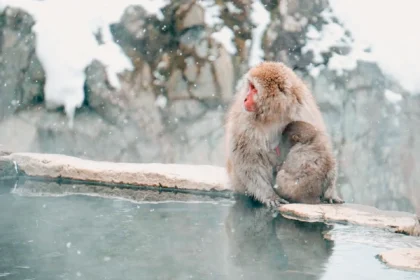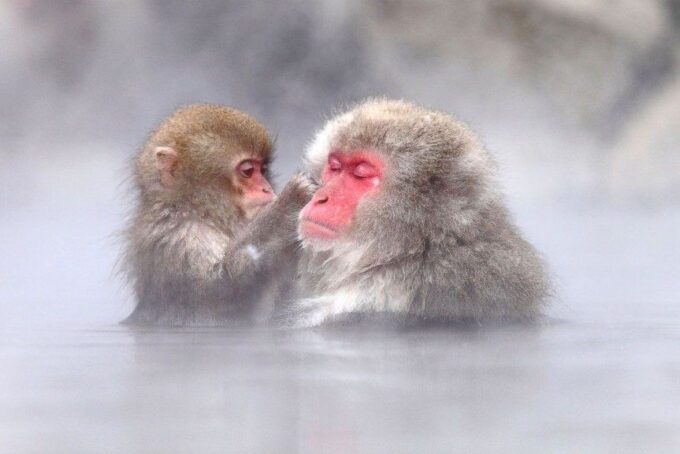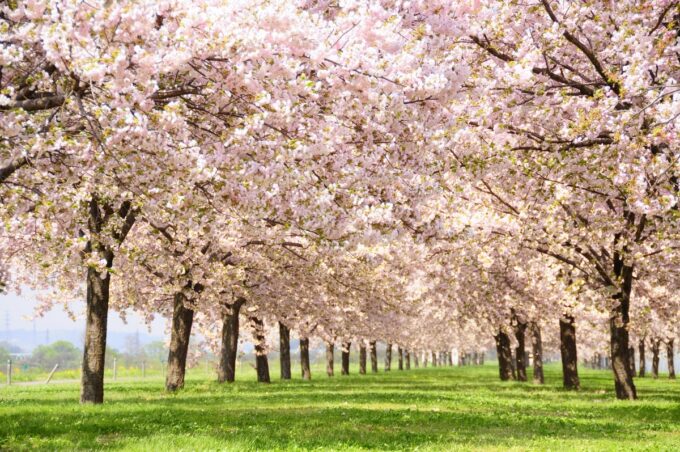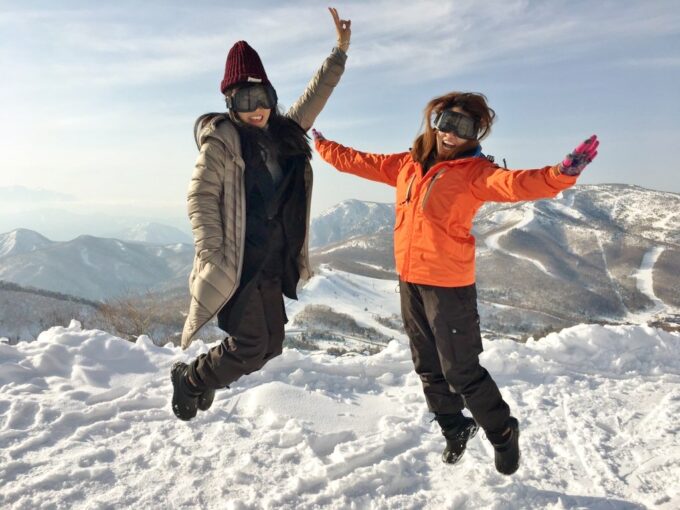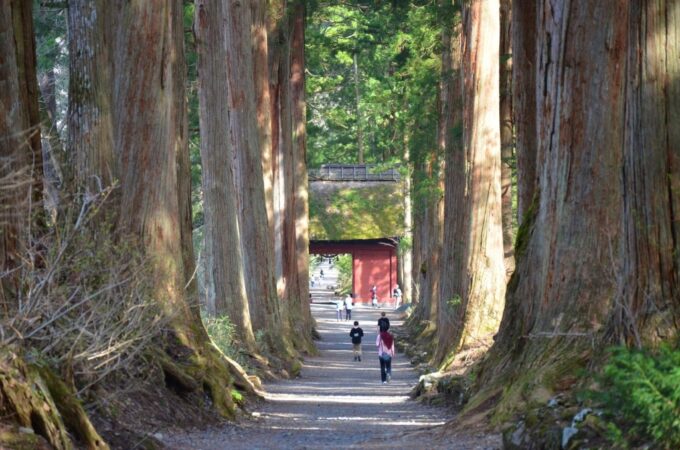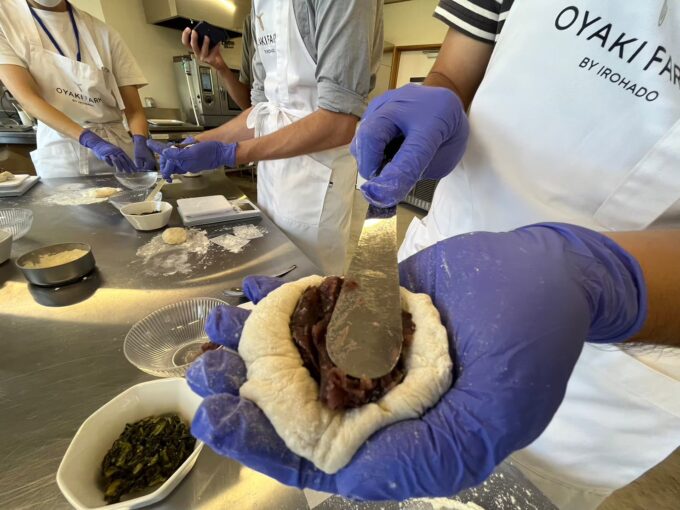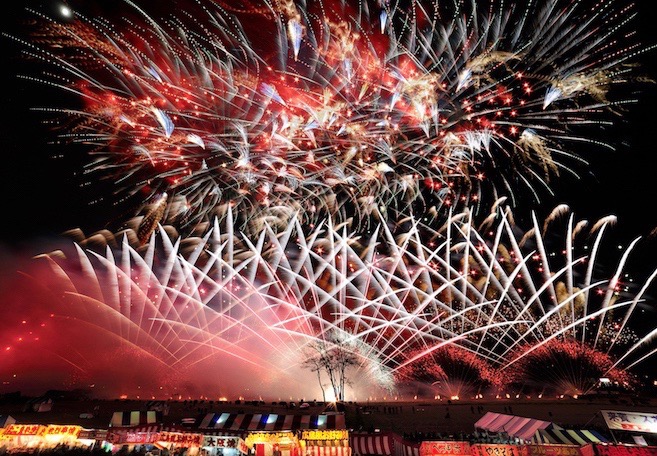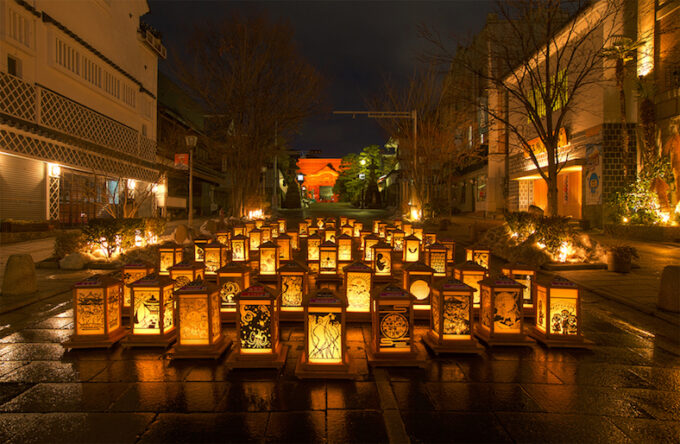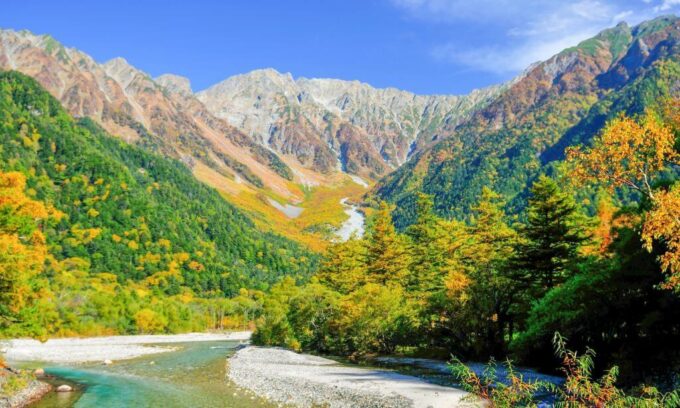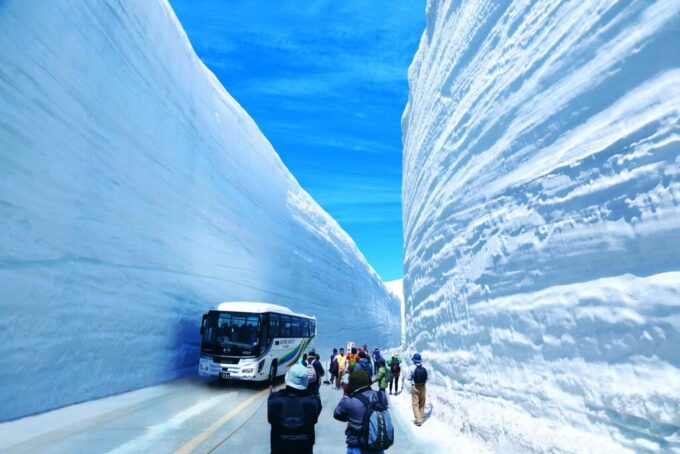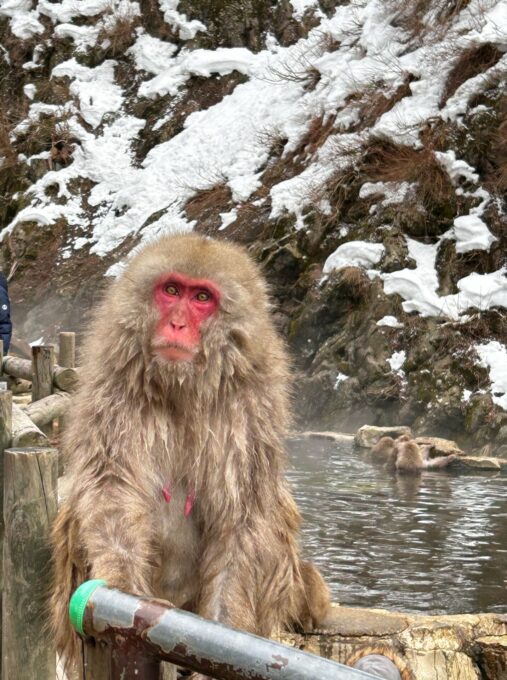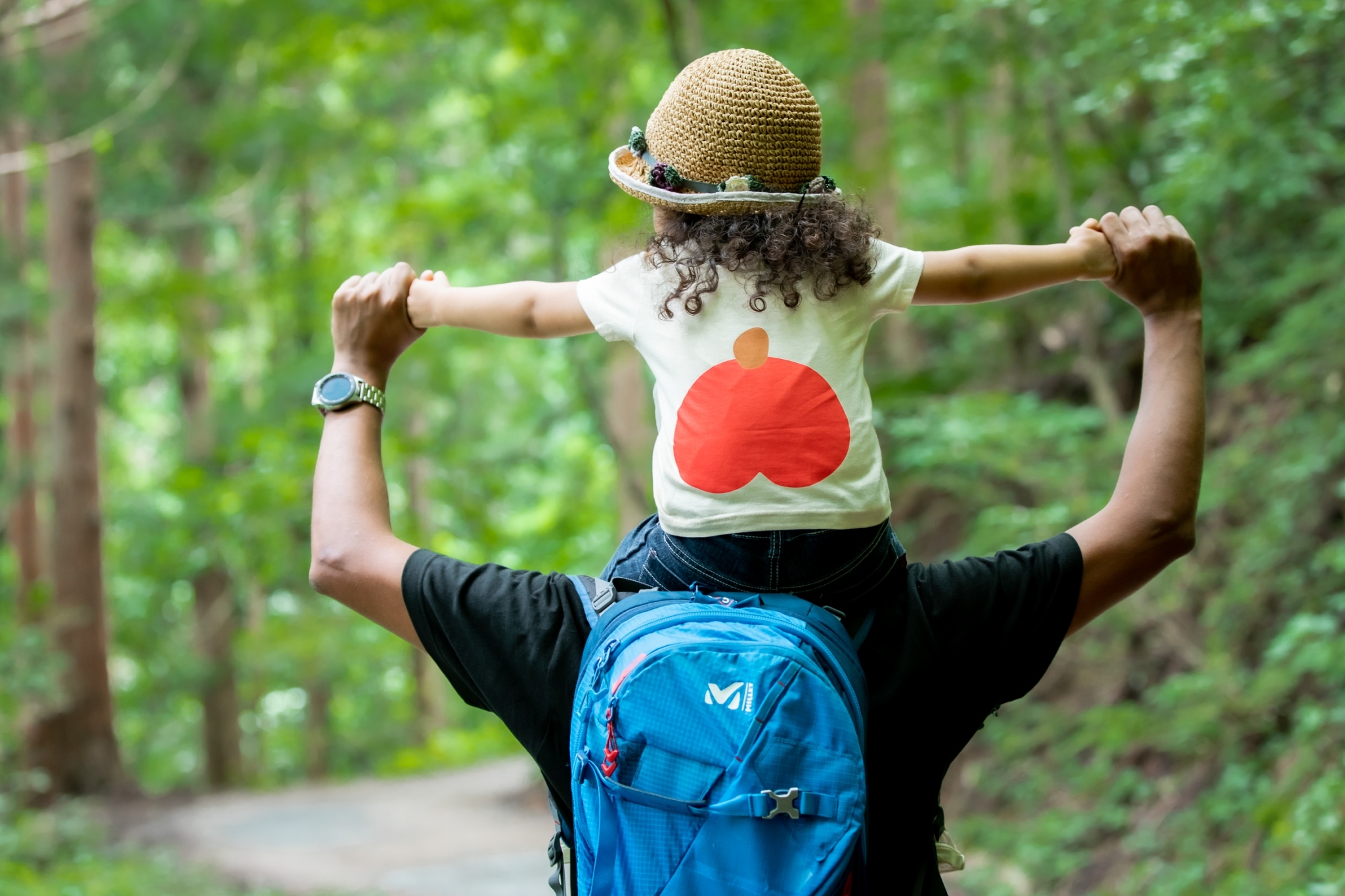
Within easy reach of Nagano Station, the monkey park is one of the region's most popular destinations. Open everyday of the year, it can be enjoyed as a day-trip from Nagano City in combination with other nearby destinations or as a part of a multi-day visit in the region. On this page you will find the following information:
-- Where is the Jigokudani Monkey Park?
-- 25 Things to Do Around the Monkey Park
-- Where to Stay When Visiting the Park
-- Snow Monkey Park General Information
-- Tours and Charters to the Monkey Park
Often referred to as the 'Snow Monkey Park', the Jigokudani Monkey Park was established in 1964, as a conversation area for the protection of a local troop of monkeys. Though wild, that troop chooses to move through the park each day, offering visitors a unique chance to observe these truly curious creatures up close. The monkey park sits within the wider region of Yamanouchi, an area that boasts multiple hot spring towns, multiple ski resorts, and the expansive Joshinetsu Kogen National Park. Known best for the cold and snow of winter, the park and surrounding region entices visitors all-year-round with spring, summer and autumn each offering a unique experience at the park, the towns below or mountains above.
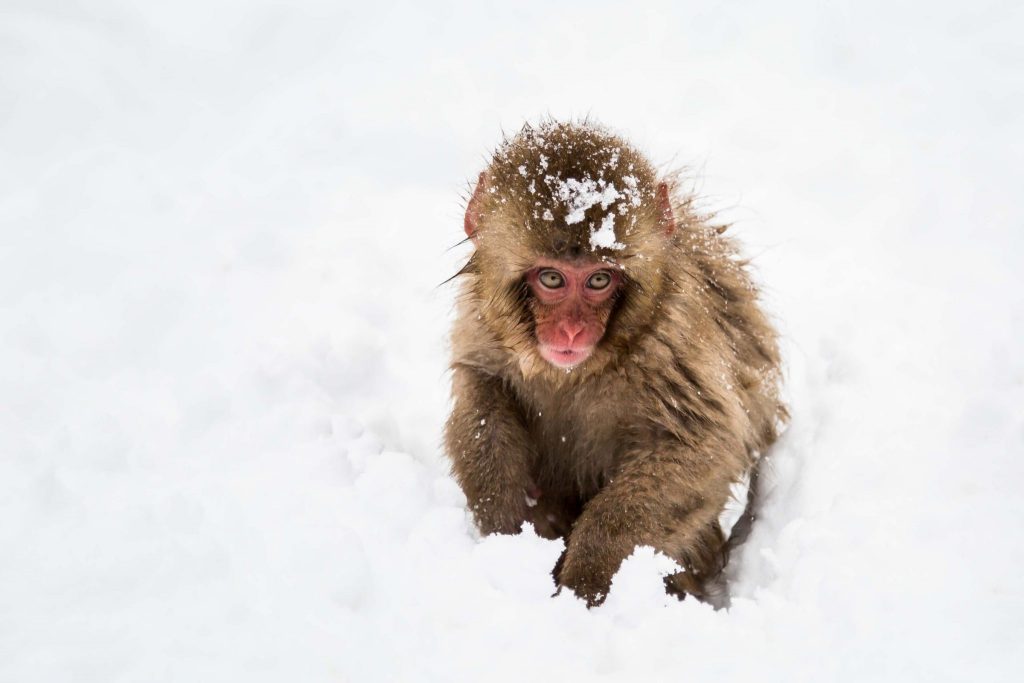

Based in Nagano and operating all year round, we are the region’s No.1 tour and charter operator. Our group tours run throughout the year, including multiple tours including visits to the monkeys. We can also arrange private tours and charters to the park along with any destination in the region, and as a registered travel agent, we can package transport, accommodation and more together so you save and get the most out of your time at the park, Nagano and beyond – scroll to the bottom for details.
WHERE IS THE JIGOKUDANI MONKEY PARK?
The Jigokudani Monkey Park – often referred to as the Snow Monkey Park – is around 35KM / 50-minutes to the north-east of central Nagano City. Open every day, the monkeys come to the park through the year making it one of Nagano’s most popular attractions, When heading to the park using public transport, it will be easiest to do so from Nagano Station, from where an Express bus runs directly to Kanbayashi Onsen – where the park is located – or alternatively, you can take the Nagano Dentetsu railway to Yudanaka Station – the nearest train station to the park – and from there, take a local bus to the park. Both options take around 50 to 55-minutes in total to get here. The park is located in the small hot spring village of Kanbayashi Onsen, which itself is located in the wider region of Yamanouchi – a region including the park, multiple hot spring villages, Shiga Kogen Ski Resort, the smaller ski resorts of Kita-Shiga Kogen and Joshinetsu Kogen National Park. Within easy reach of Nagano City, visiting the monkey park as a day-trip is easy while also providing lots of reasons to stay in the area on a multi-day visit.
25 THINGS TO DO AROUND THE MONKEY PARK
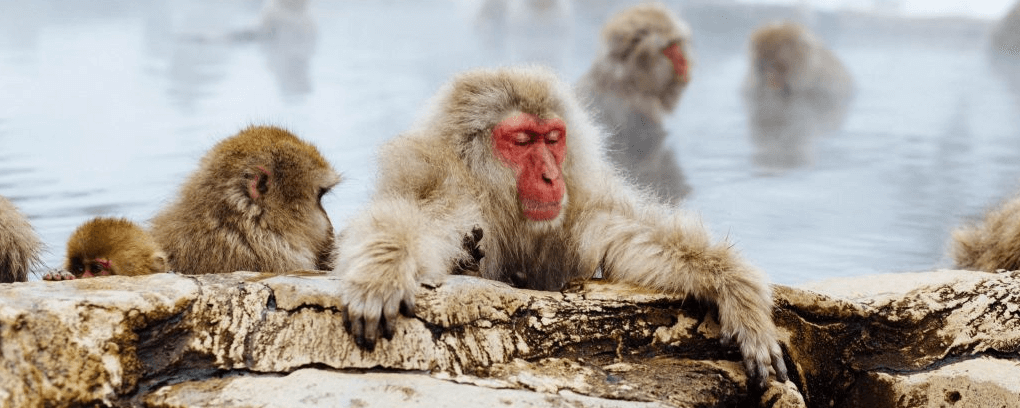
Often referred to as the Snow Monkey Park, you'd be forgiven for thinking the park is only open and the monkeys only venture there in winter. While it's true they are most famous for their winter antics, the monkeys come to the park all year round and there are just as many reasons to visit in spring, summer and autumn. Located in the beautiful rural enclave of Yamanouchi and within easy reach of Nagano City, visiting the park can be easily combined with plenty of nearby destinations and activities, as a day-trip or multi-day visit. Here's our suggestions of the best things to do in the area:
1 / VISIT THE MONKEY PARK / all year round
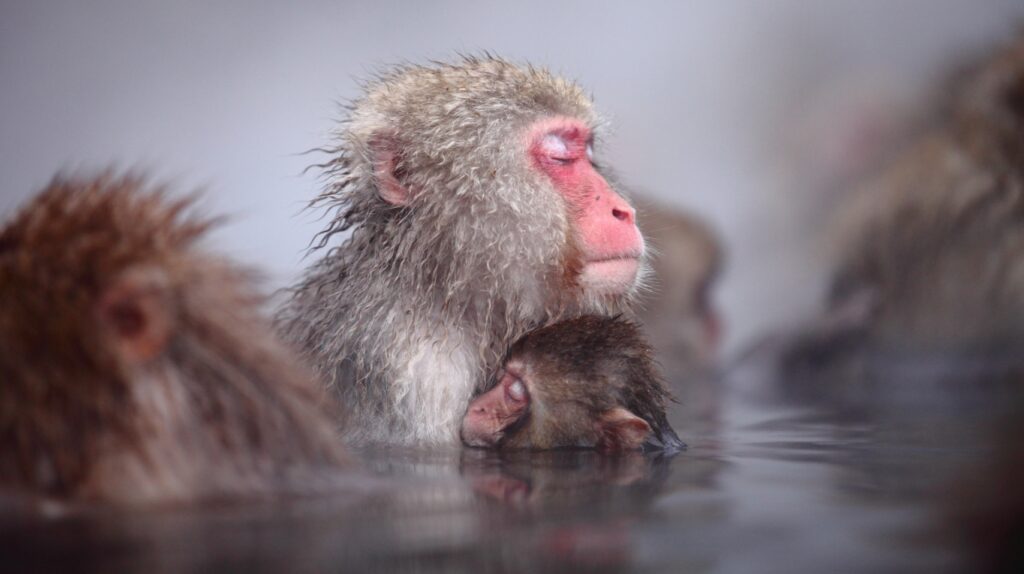

This one goes without saying! As the only troop of monkeys in the world known to naturally bathe in hot springs, the Jigokudani Monkey Park – often referred to as the Snow Monkey Park – is one of the region’s most popular destinations in Nagano. With no barriers separating you and the monkeys, this is a unique chance to observe these curious creatures in close proximity and witness the unusual sight of a Japanese macaque relishing the warm thermal waters of the park.
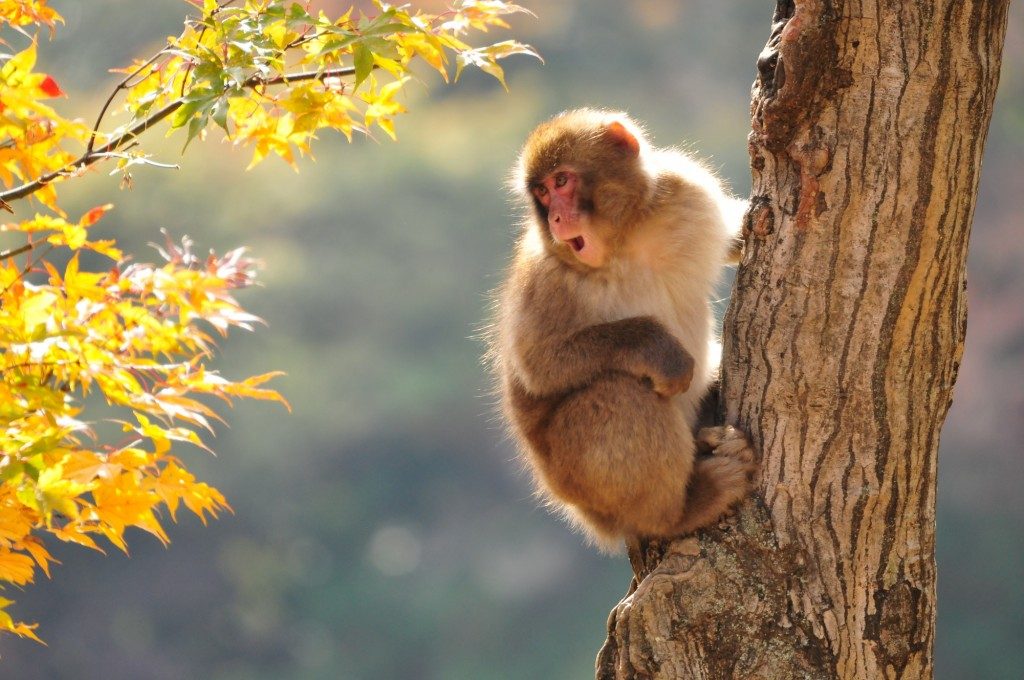
Most famous for their antics in winter, the monkeys in fact come to the park throughout the year. Spring sees the local cherry blossoms bloom and the year’s baby monkeys being born, followed by the lush, hot and humid summer and finally, the beautiful leaves of autumn; all before winter takes hold again and each season offering its own reasons to visit.
2 / GO SLOW & ENJOY KANBAYASHI ONSEN / all year round
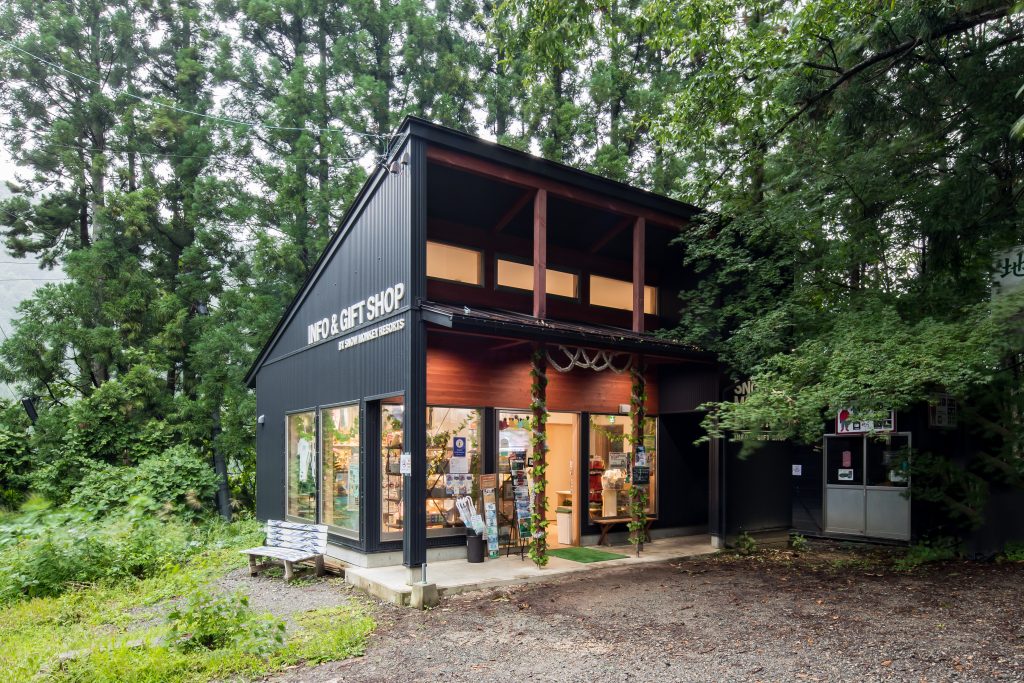
Located in the small hot spring village of Kanbayashi Onsen, the monkey park is popular as a morning or afternoon trip from Nagano. When there, we suggest you take it slow and enjoy a little monkey shopping or one of the restaurants within walking distance of the park. Immediately next to the entrance to the trail leading to the park, the Snow Monkey Resorts Info & Gift Shop is open from October to May. Stocking all types of monkey stuff, from official SMR merchandise, to monkey dolls, clothing and snacks, the Info & Gift Shop also rents snowboots and jackets in winter with staff on-hand to provide information and assistance during your visit.
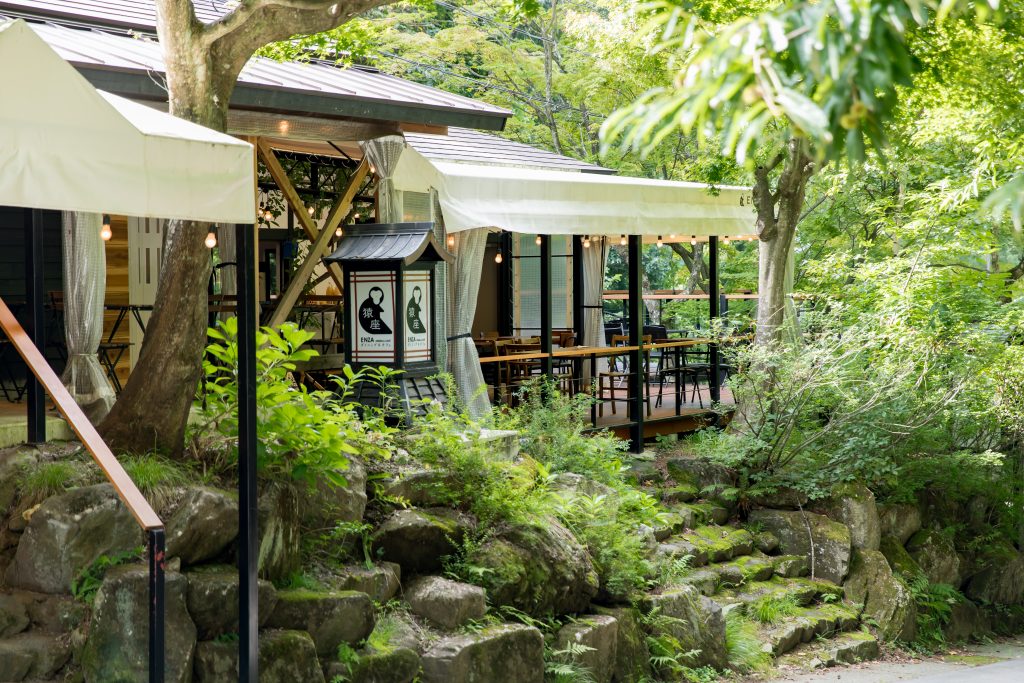
Closed from June to September, you can still get your monkey merch at Enza Café – under a minutes walk down the road. Enza Cafe serves both Japanese and Western dishes, coffee and other drinks including craft beer and more – the ideal place to grab a snack or sit down for a meal or drink before or after heading into the park.
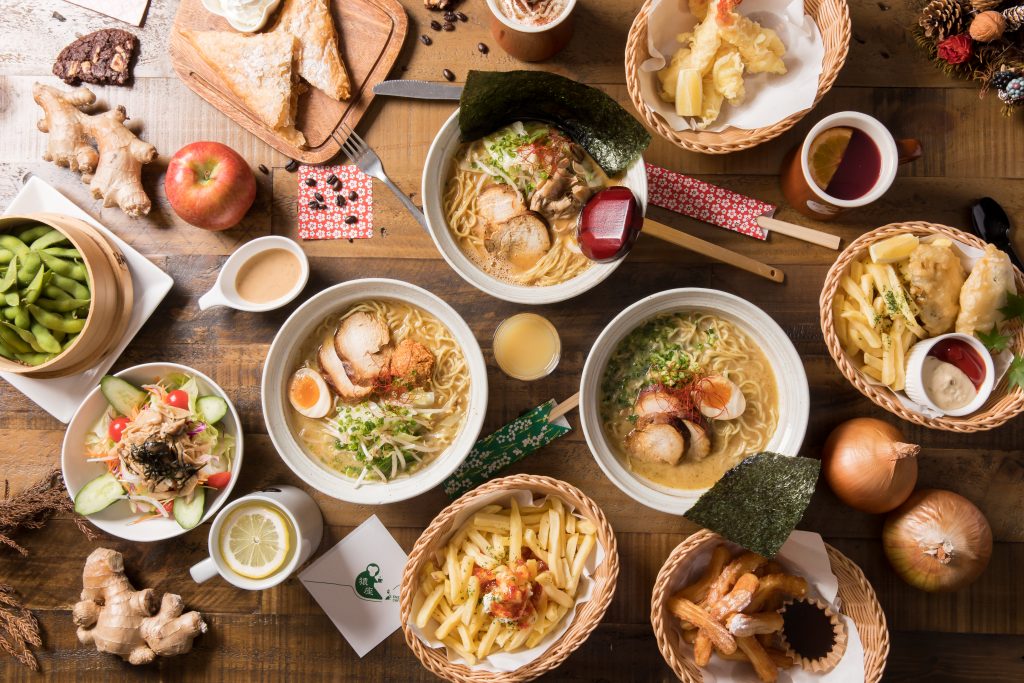
The cafe offers both indoor and outdoor seating and a relaxed, open-plan design which encourages you to take your time at the park. For visitors headed there through spring to autumn, Enza’s large terrace is an ideal spot to enjoy a meal and drink – especially beautiful in autumn as the large ‘momoji’ above the terrace turns deep red.
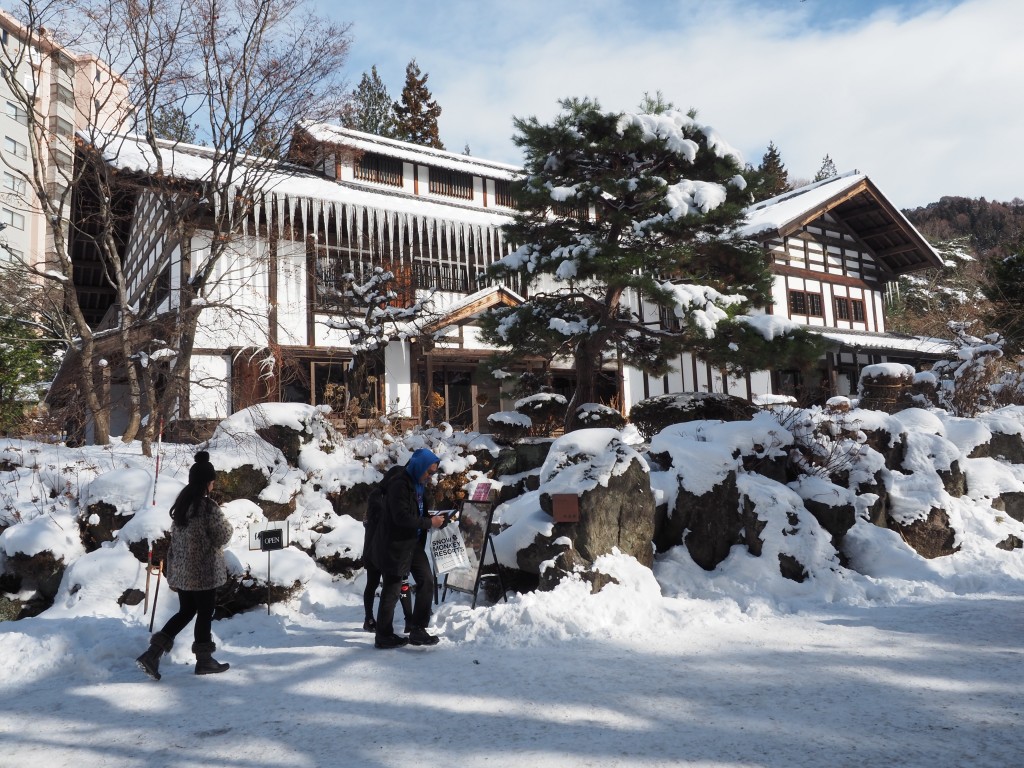
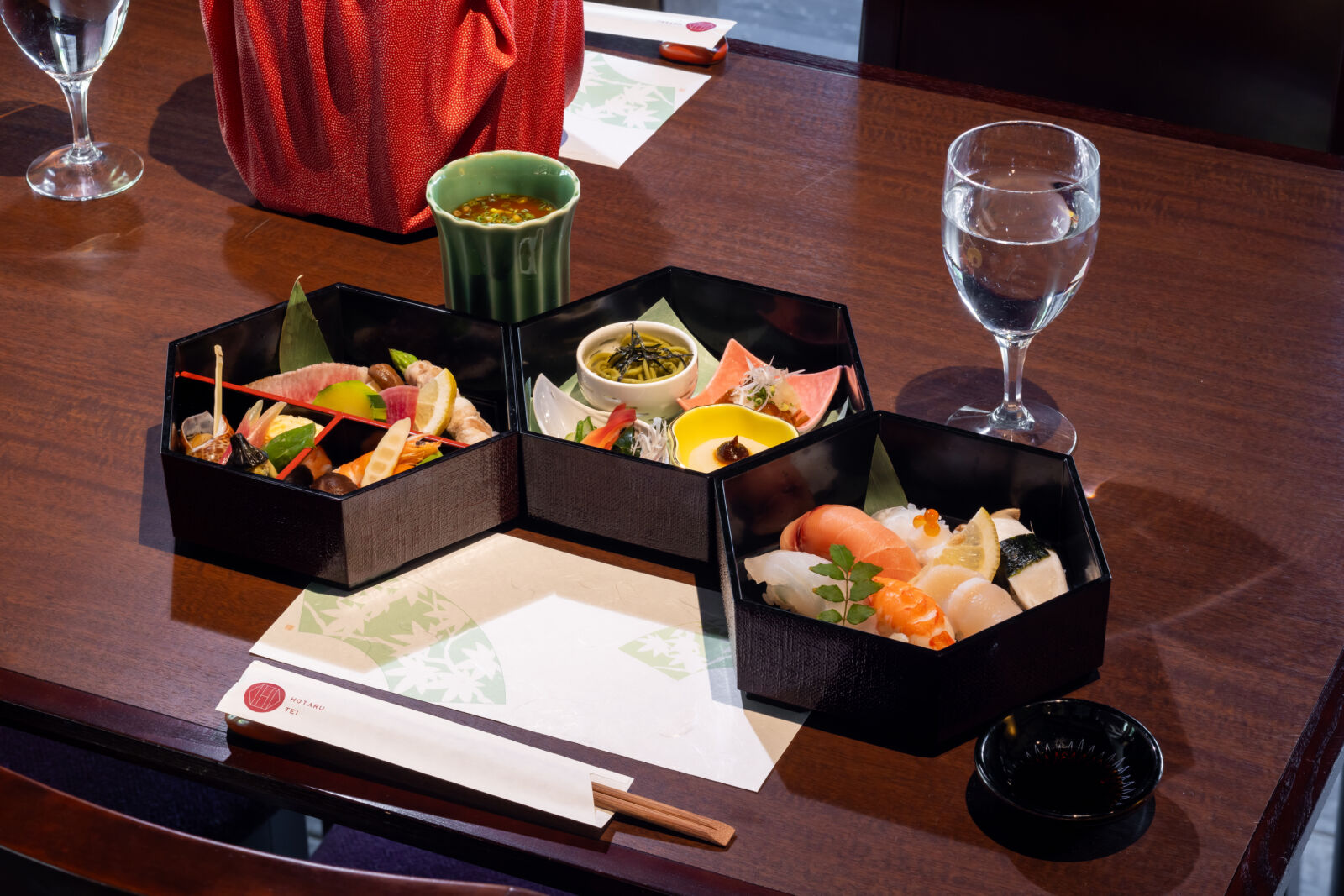
Further down the hill and nearby the bus stops, Hotarutei offers visitors the nearest fine-dining experience to the monkey park. Housed in a converted 170-year old mansion, Hotarutei serves an indulgent menu of tempura, wagyu beef, hot pot and sushi in a tranquil atmosphere. Particularly beautiful as the snow falls in winter, we recommend Hotarutei to any visitor looking to enjoy a more traditional Japanese meal during their time at the monkey park.
3 / STAY AT A ‘RYOKAN’ IN KANBAYASHI / all year round
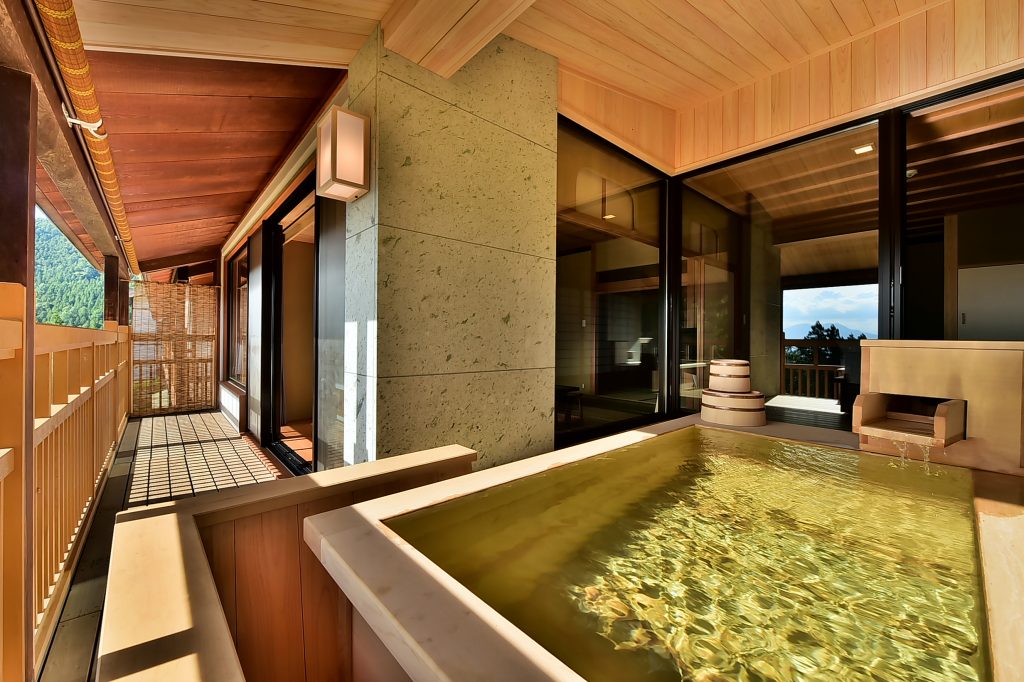
As a small hot spring town, Kanbayashi Onsen has a handful of excellent ‘ryokan’ (traditional guesthouses/hotels), offering great service, dining and of course, their own hot springs. Hotel Senjukaku is one of our recommendations when staying overnight in Kanbayashi. Located only a couple of minutes from the trail leading to the park, Senjukaku offers both Japanese and mixed Japanese-Western rooms, outstanding indoor, outdoor and private hot springs, and acclaimed ‘kaiseki’ (multi-course) meal service based on the best seasonal ingredients.
The Hotarutei Villas, attached to the aforementioned Hotarutei Restaurant, which include multiple rooms and private onsen (hot spring baths), also provide a great accommodation for any looking to stay near the monkey park. Perfect for families or larger groups, guests at Hotarutei Villas can reach the Monkey Park on foot in 30-40 minutes (as it is located nearby the Monkey Park Trailhead), or head to Shiga Kogen on the Nagaden Express Bus for some skiing.
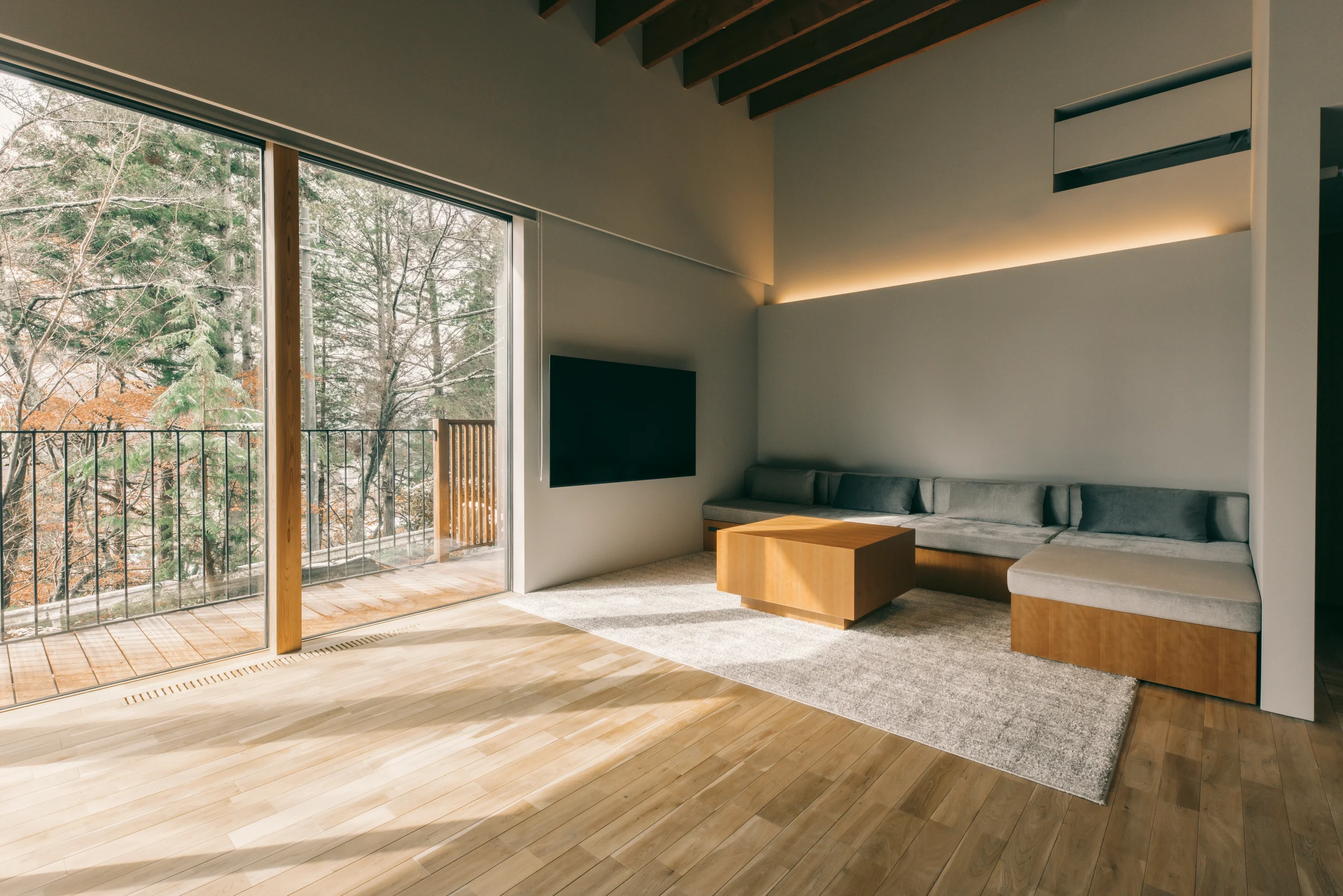
While the park can be busy during the day, the village is very quiet at night allowing you to fully unwind and indulge in traditional Japanese comfort, service and some of the region’s best hot springs. For more information, see 'Where to Stay When Visiting the Park' below.
4 / JOIN A GUIDED TOUR TO THE MONKEYS / all year round

Based in Nagano, we offer a range of group tours that include a visit to the monkey park throughout the year. All of our monkey tours are led by locally-based guides and combine a visit to the park with other fantastic destinations and activities, and a delicious lunch or dinner. Our longest-running and most popular tour, Snow Monkeys, Zenko-ji Temple & Sake, includes a morning visit to Nagano’s near-1400 temple, sake tasting, lunch and early afternoon visit to the park; while our seasonal tours through spring, summer, autumn and winter give you the option of combining your visit to the monkeys with an afternoon of blossom-viewing, local festivals and fun in the snow come winter!
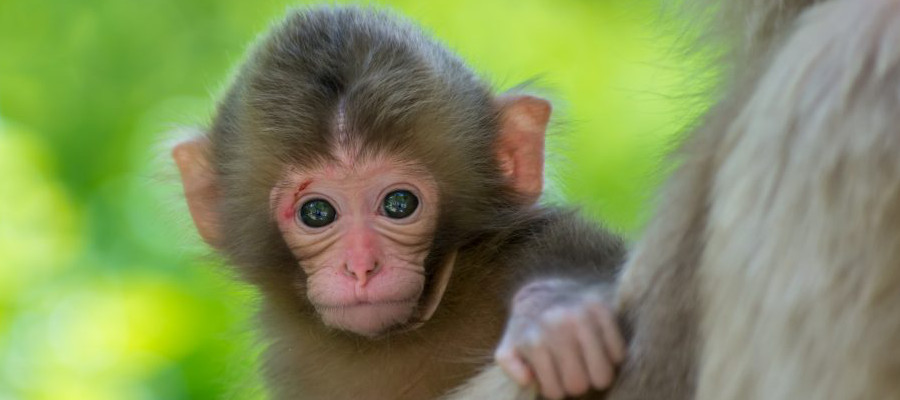
So no matter what time of year that you are visiting, book a tour with us and turn your visit to the monkeys into a real experience! For a complete listing of what's available, see our 'Tours' main page.
5 / EXPLORE YAMANOUCHI – HOME OF THE SNOW MONKEYS / all year round
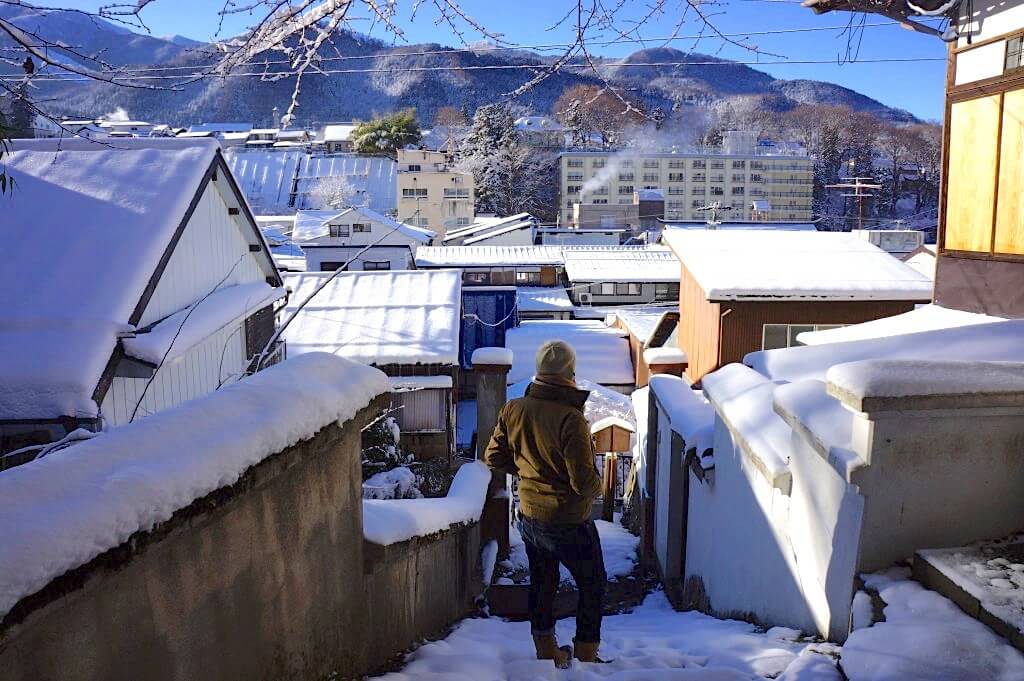
The monkey park and Kanbayashi Onsen are part of a larger area called Yamanouchi – an area that also includes the nearby historic hot spring towns of Yudanaka and Shibu Onsen, the ski resorts of Shiga Kogen and Kita-Shiga Kogen, and Joshinetsu Kogen National Park. Blessed with abundant farmlands, pristine nature, numerous hot springs and heavy snow in winter, Yamanouchi has a strong association with healing, refuge and renewal and Yamanouchi is divided into three areas – Yudanaka & Shibu Onsen, Shiga Kogen and Kita-Shiga Kogen. Staying at one of Yamanouchi’s many guesthouses is an ideal way to explore the region while enjoying the quaint comforts of its traditional hot spring towns. For further information, see our ‘20 Things to Do in Yamanouchi’ page.
6 / ENJOY TRADITIONAL ‘ONSEN’ TOWN EXPERIENCES / all year round
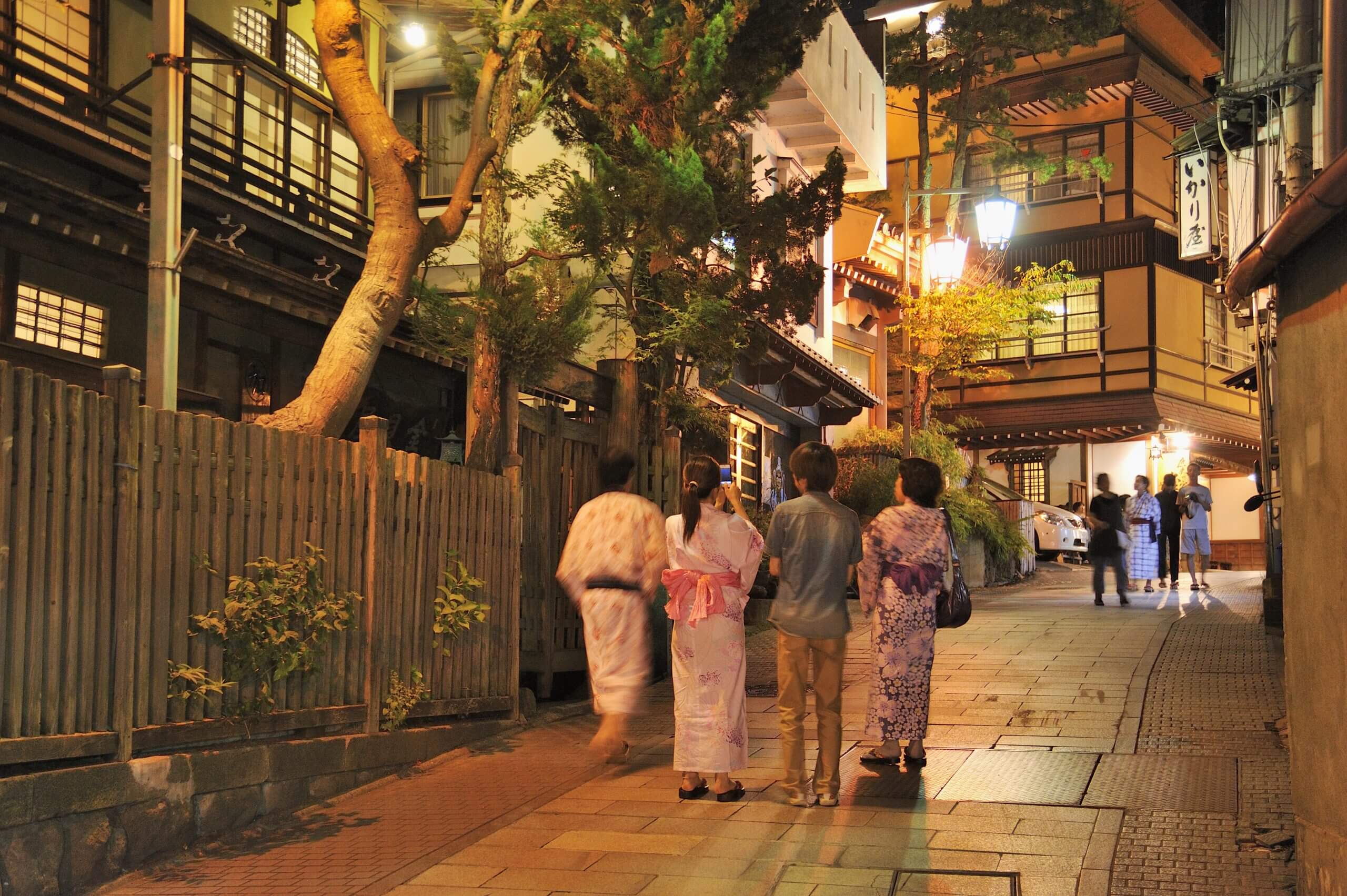
One of the basic charms of any onsen town, is the feeling they imbue of stepping back in time into a quaint and fading world. Life is slower in an onsen town, where traditions hold on with determination. When visiting Yamanouchi and its historic hot spring towns of Yudanaka and Shibu Onsen, one of the most simple but enjoyable activities is savouring the trimmings typical of such places. Wandering the streets you will find stores selling treats including ‘senbei’ and ‘manju', snacks synonymous with onsen towns. You will also find ‘onsen tamago’, eggs literally boiled in the onsen water and hot water sources you can drink. Shooting galleries and other traditional games can be enjoyed by guests of all ages, while you wander the streets in your ‘yukata’ (light kimono) and ‘geta’ (wooden sandals). These are the charms of onsen towns. For more information, see our ‘Activities in Yudanaka Onsen & Shibu Onsen’ page.
7 / SHIBU ONSEN’S NINE HEALING ONSEN / all year round
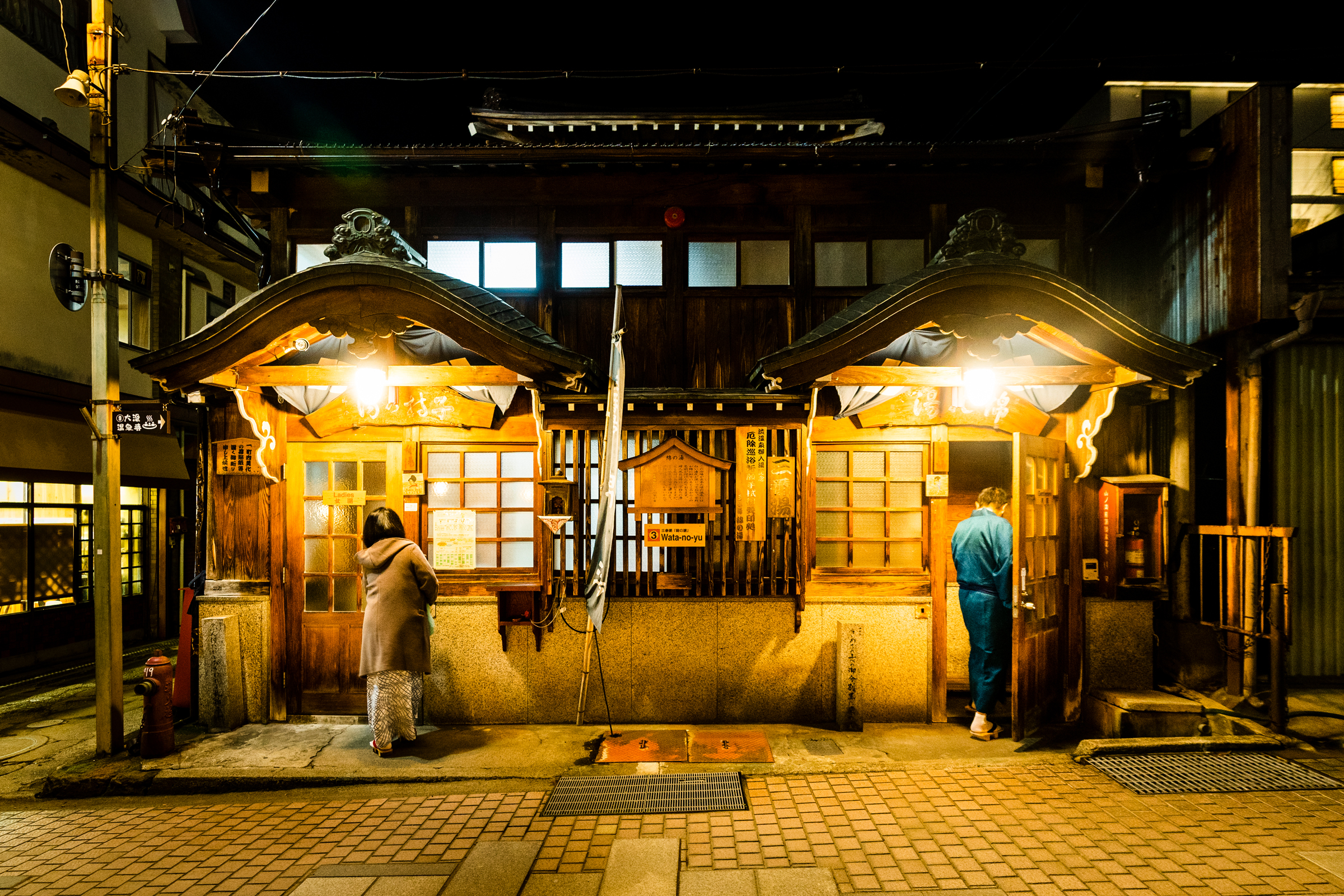
Shibu Onsen is particularly charming town. With a history stretching back 1300 years, this quaint town is full of surprises with many ryokan family-run. Of particular note, Shibu is home to nine ‘public’ onsen however all but one is reserved for the use by hotel guests and local residents. Upon check-in, guests of any hotel or guesthouse are given a key which opens each of the nine small baths. Each has its own source of water and own (claimed) medicinal properties. Trying each of the nine onsen on ‘kyu-to-meguri’ (nine onsen tour) is an experience unique to Yamanouchi. While in Yamanouchi, make sure to enjoy one of the many restaurants and a couple of bars, known for their welcoming atmosphere, good food and of course, cold beers and warm sake. For further information about what awaits in both hot spring towns, see our ‘Activities in Yudanaka Onsen & Shibu Onsen’ page.
8 / STAY IN YUDANAKA & SHIBU ONSEN / all year round
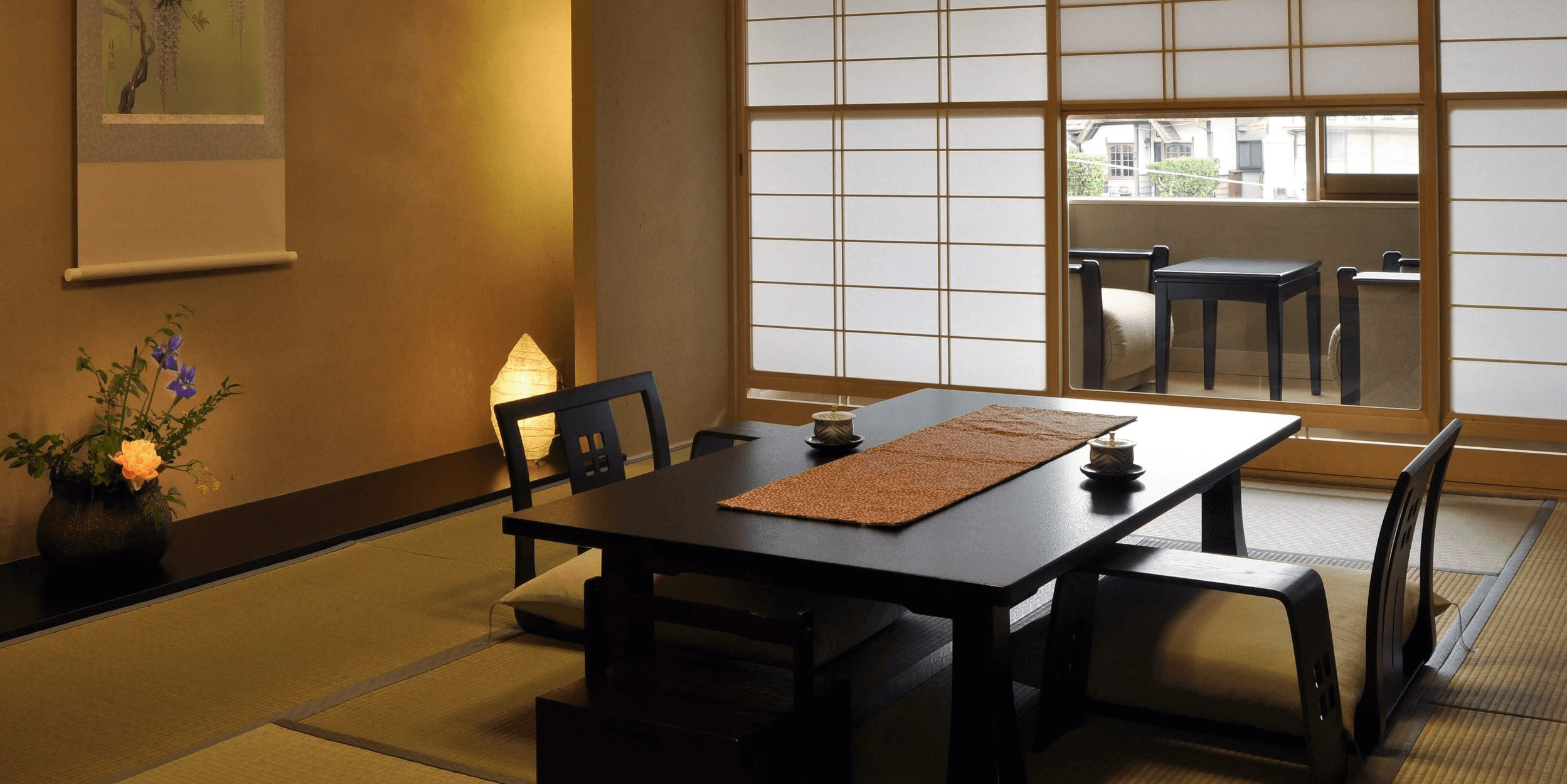
Onsen come in all shapes and sizes. Some are ancient, run-down and a little bit wild while others are modern, stylish and indulgent. Many are open to the public as daytime spas open to the public however just as many are inside or attached to hotels and guesthouses and for the exclusive use of overnight guests. Known as ‘ryokan’ or ‘minshuku’ in Japanese, staying at an onsen hotel is a fantastic option for guests wanting a truly immersive experience. The towns of Yudanaka and Shibu Onsen are home to numerous ryokan and minshuku. Often family-run, staying at one while in the area is a great way to experience traditional Japanese service and a warm welcome. Ryokan typical reserve use of their onsen exclusively for their guests and often offer private onsen, known as ‘kashikiri-buro’, which can be arranged at time of check-in (possibly at a small additional fee).
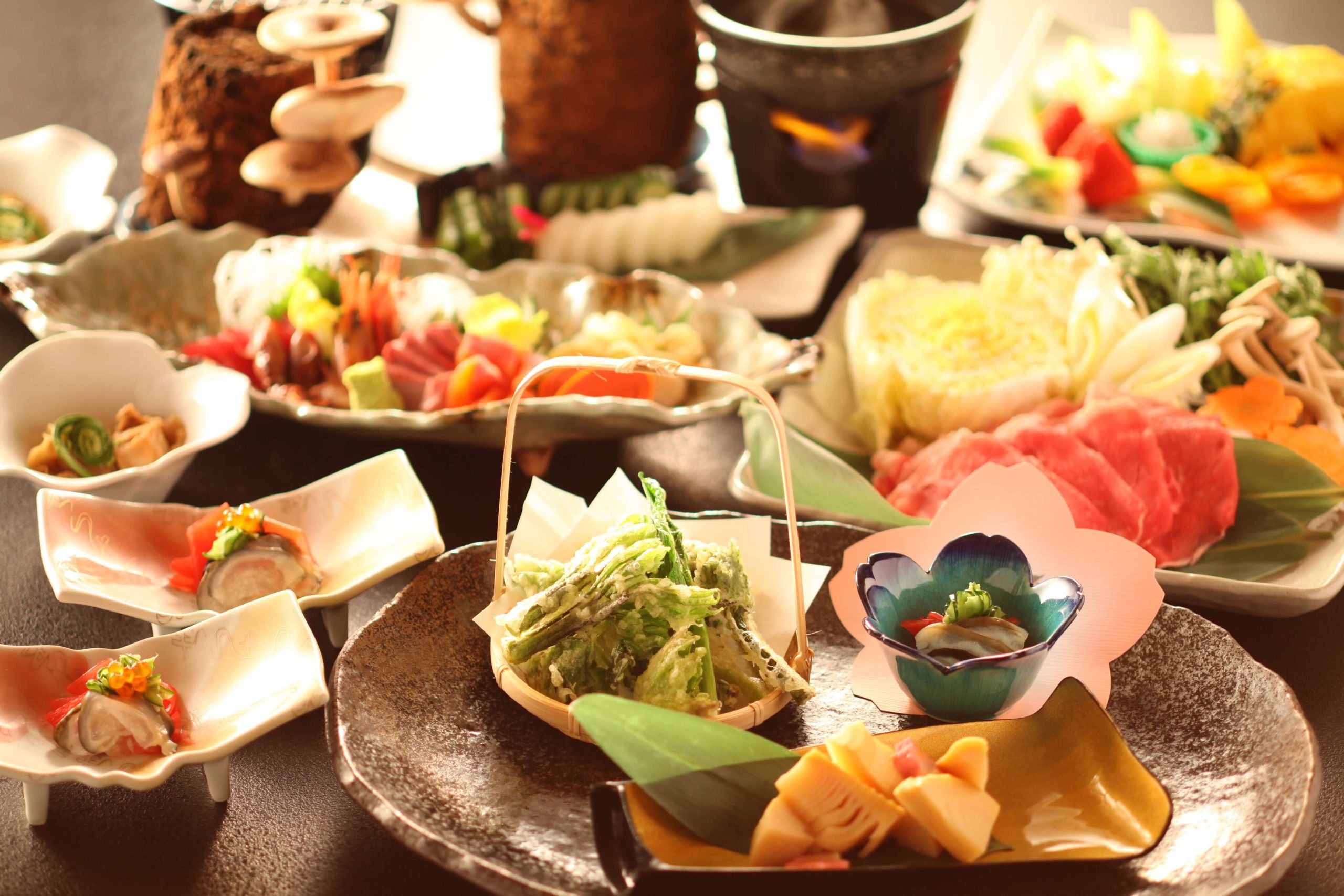
Most ryokan will also offer a traditional ‘kaisekei’ multi-course menu for dinner. While many international visitors to Japan have heard the term ‘kaiseki’, the exact meaning is often less well understood. That is for good reason. Kaiseki refers to a multi-course meal service which uses seasonal and often local ingredients to create a unique menu, as designed by the head chef. For that reason, not only is there fantastic variation between kaiseki menus between guesthouses, kaiseki dining will varying greatly at the same hotel between seasons. For more information, see 'Where to Stay When Visiting the Park' below.
9 / SKI & SNOWBOARD IN SHIGA KOGEN SKI RESORT / late-November until May
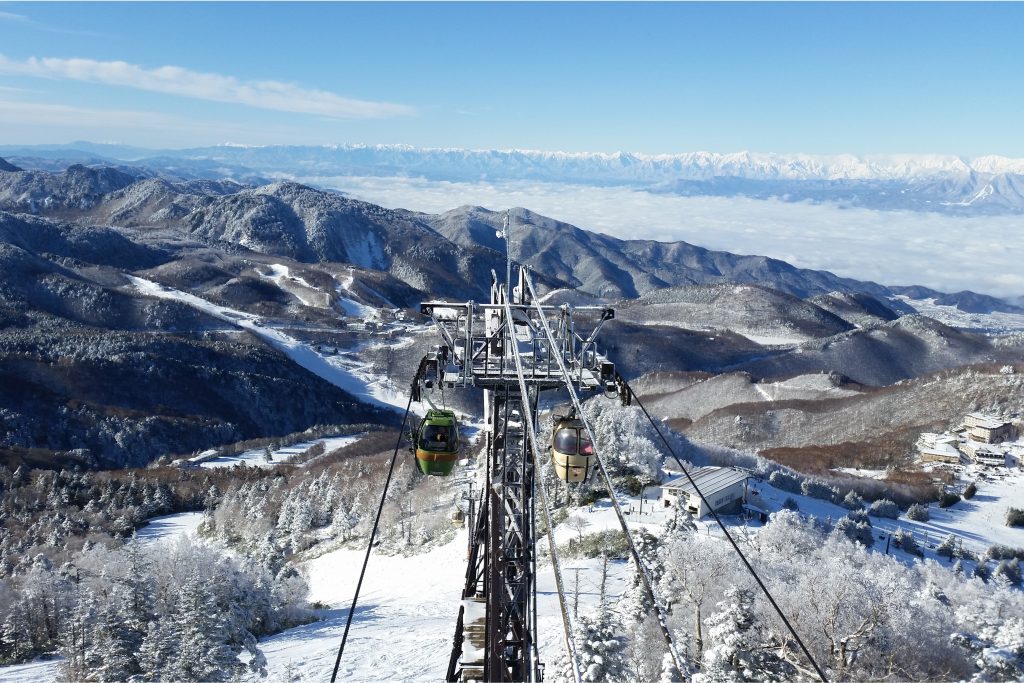

Nestled within Joshinetsu Kogen National Park – see below for details - Shiga Kogen is Japan’s largest and highest ski resort. As such, Shiga Kogen offers an expansive area to explore and conquer – around 80 courses, spread over a huge variety of terrain connected by more than 50 chairlifts and gondolas. In total, Shiga Kogen offers around 600 hectares of terrain and 80+ km of trails covered by one all-mountain pass. Shiga Kogen is in fact comprised of 18 ski areas – some large, some small – spread between five mountain peaks. The topography and layout of Shiga is reminiscent of European resorts, with ski runs leading into the valleys between the mountains where a seemingly endless expanse of terrain is waiting to be discovered. Shiga’s season starts earlier and goes longer with some ski areas opening as early as late-November and staying open until late-April or even into May – long after the other resorts of closed for the season. As such, Shiga offers visitors Nagano’s best spring-skiing and all within easy reach of the onsen villages of Yudanaka, Shibu and Kanbayashi.
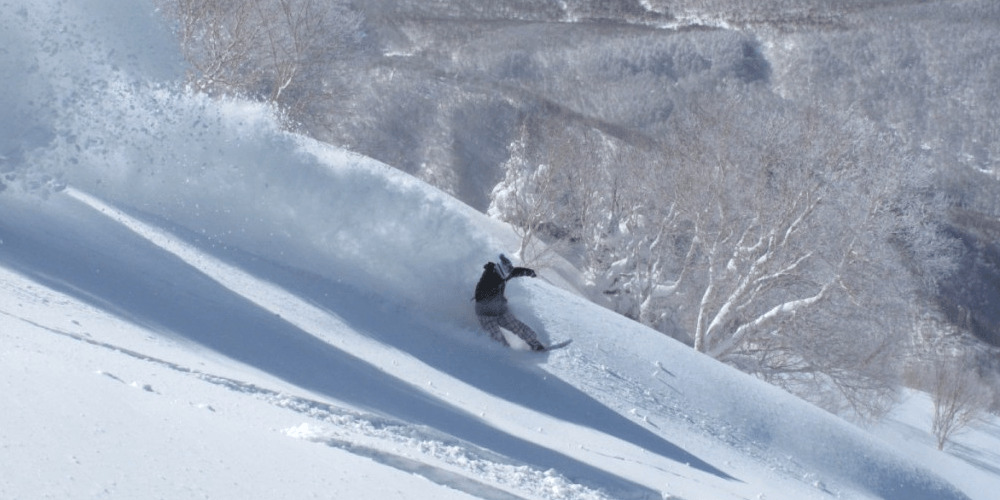
Lying within 30-minutes drive of Yudanaka Station, the area is also home to the ski resorts of Kita-Shiga Kogen. The resorts making-up Kita-Shiga connected are not connected to Shiga Kogen and are notably smaller, however if you're staying in the area for an extended visit in winter, a couple of them are worth visiting as daytrips. Ryuoo Ski Resort is the largest of them while across the valley, X-JAM Takaifuji has one of Nagan's best terrain parks. These are just a handful of Nagano's more than eighty ski resorts! For more information, see '25 / Enjoy Nagano's Many Ski Resorts' below.
10 / OTHER WINTER ACTIVITIES IN SHIGA KOGEN / December to March
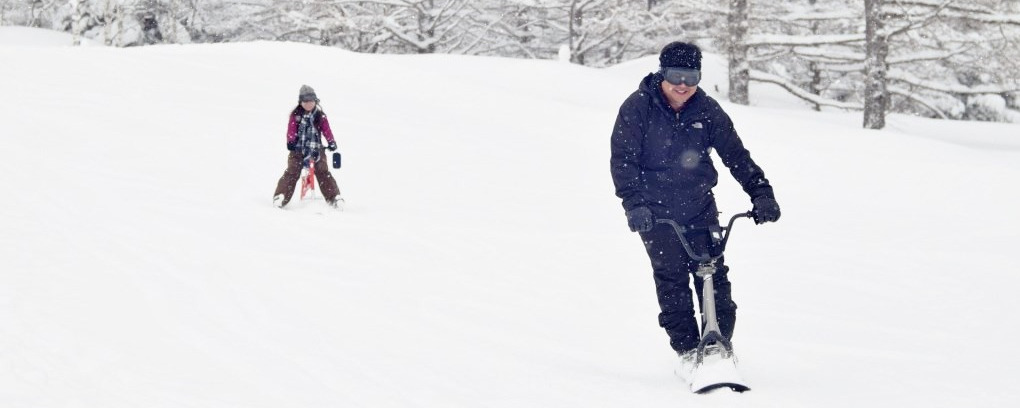
Outside of skiing and snowboarding, Shiga Kogen offers a range of family-friendly facilities for visitors. If you are visiting the resort with children or don’t have much experience and looking for a fun and easy activity, Maruike Snow Activity Park– located in the Maruike ski fields – is a great option for you! The activity area is fenced-off and provides you with a various gear including sledges, snow-tubes, snowscoots and snowdrives and lots of snow to make a snowman or have a snowball fight.
Further into the resort, the Yakebitaiyama Family Snow Park is located directly outside of Prince Hotel West, offering a similar range of activities for kids, families, or anyone wanting to release their inner-child!
11 / JOSHINETSU KOGEN NATIONAL PARK / best: June to November

Shiga Kogen Ski Resort sits within Joshinetsu Kogen National Park, the fourth largest national park in Japan. An expansive landscape that boasts multiple ski areas within its boundary, fantastic hiking trails, a wealth of alpine flora and fauna, and on its western border, the Jigokudani Monkey Park. While the park can be enjoyed all year round, mid-November to April sees heavy snow blanket the area as the ski resorts enjoy Nagano’s longest seasons. If you want to hike or explore by car, best to do so from June to early November when the snow will mostly have melted. Within the national park, Shiga Kogen Highlands is a recognised UNESCO Biopshere Reserve - a landscape of rough terrain, mountain ranges – including multiple peaks rising over 2000 metres above sea level – and forests with ponds, swamps, high-moors, and rivers, making it an ecologically important environment in which a wide variety of animals, plants, and insects coexist.
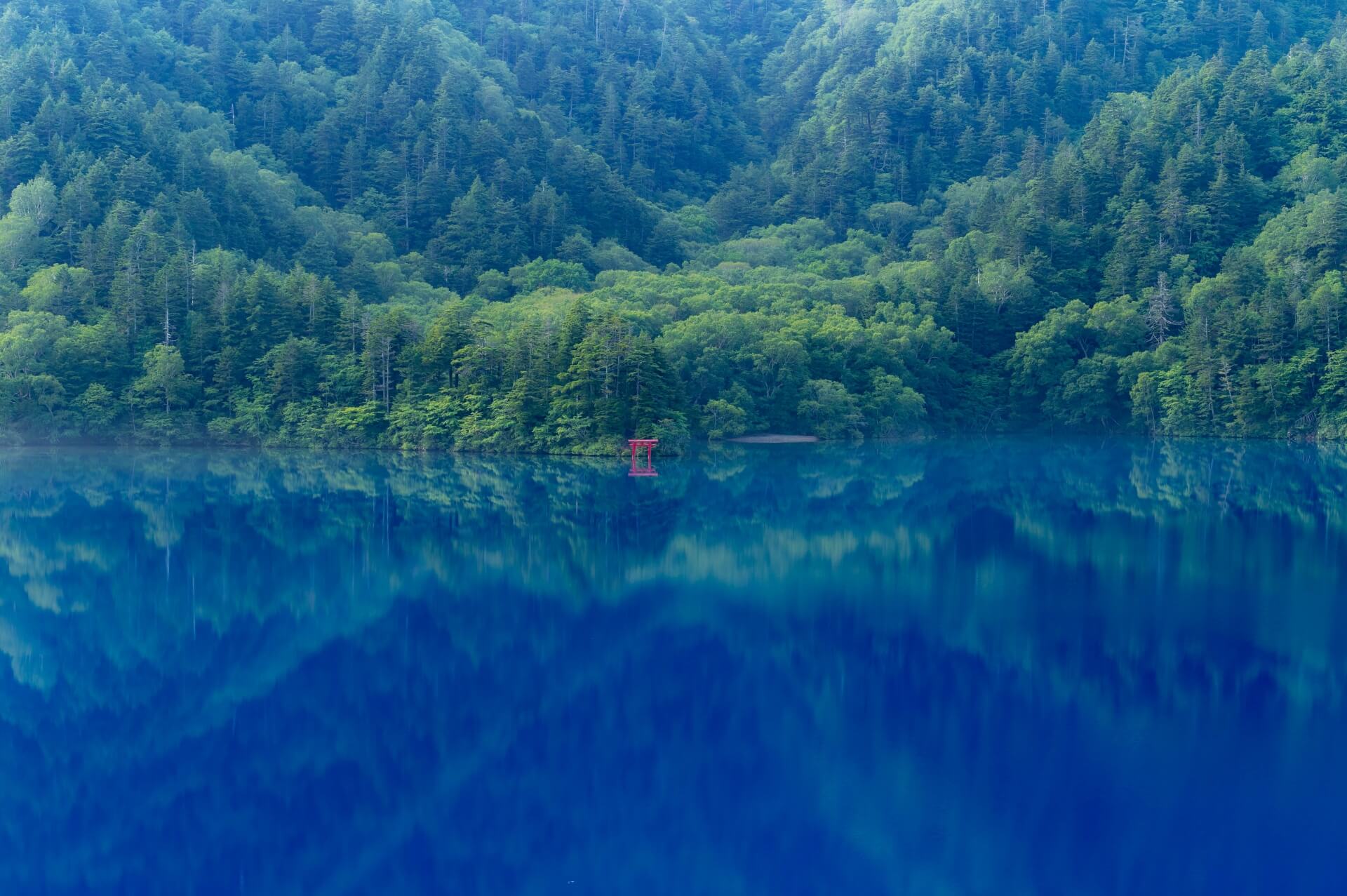
The beauty and significance of Shiga Kogen Highlands is well-known among Japanese but less well-known among international visitors. Hiking through the highlands is a fantastic way to escape the summer heat (the temperature in Shiga is regularly 5°C to 10°C lower than the valleys below) and breathe in the beauty and true ecological importance of this stunning region. The highlands boasts multiple gondolas and chairlifts, with several operating throughout the year and opening fantastic view points and hiking for visitors from June until November.
12 / ROPEWAYS & GONDOLAS OF YAMANOUCHI / (almost) all year round
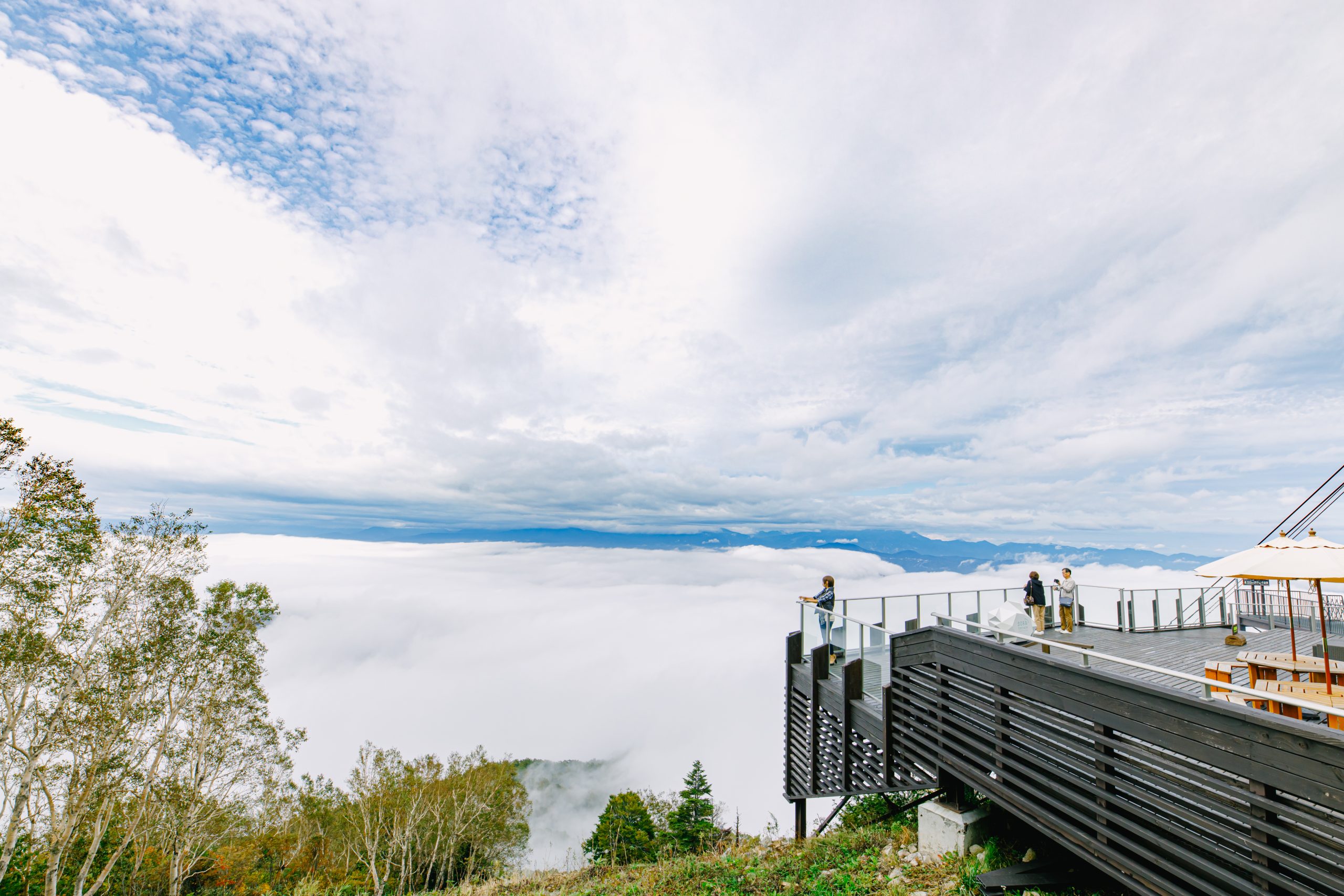
After a short break following the end of the ski reason, three ropeways will begin to operate again and in doing so, provide access to some of the higher reaches of the mountains, leisurely walking trails, and outstanding views. Located in Shiga Kogen, the Higashidateyama Ropeway transports passengers to 2008 metres above sea level to enjoy panoramic views, a café and alpine botanical garden. Small gondolas allow passengers to ride by themselves or just with family and friends. Also in Shiga Kogen and rising to an elevation of 2307, the Yokoteyama Chairlift operates from late-May until the end of October. At the top, visitors have a panoramic view back for Shiga Kogen and toward the North Japan Alps. A café and viewing deck awaits up top, with walking trails leading back down or further into the national park. The Skyland Express Ropeway is located in Kita-Shiga Kogen and operates for most of the year including from May until November. Rising to the upper station at 1770 metres above sea level the large gondola can carry more than 160 people and on a clear day, affords fantastic views of the valley below and the mountains of the North Japan Alps. Located next to the upper gondola station, Sora Terrace is an observation deck and café - pictured above - offering panoramic views of the surrounding landscape.
13 / STAY IN SHIGA KOGEN & JOSHINETSU NATIONAL PARK / all year round
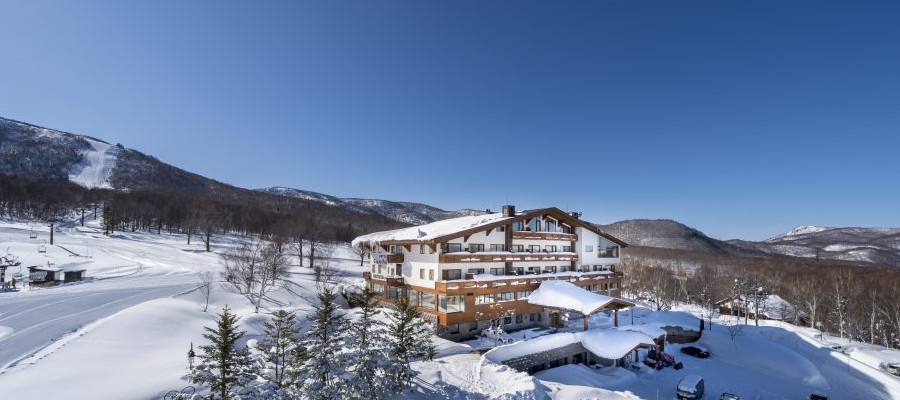
Whether you are heading there in winter to enjoy some of Nagano’s best skiing and snowboarding, or visiting in spring, summer and autumn to explore the highlands and national park, there are some great options when it comes to staying in Shiga Kogen. Our recommendation is Hotel Grand Phenix, located in the Okushiga area of Shiga Kogen Ski Resort. Hotel Grand Phenix Okushiga is the premier hotel in the beautiful Joshinetsu Kogen National Park, combining European-style accommodation and comfort with traditional Japanese service and outstanding facilities. Situated deep within the national, the grandeur of Grand Phenix sits easily within the beautiful surrounding landscape with many seasonal activities on your doorstep including ski in/out access in winter. For a breakdown of other areas to stay in Shiga and accommodation listings, see our 'Where To Stay In & Around Shiga Kogen' page.
14 / DRIVE THE SHIGA KUSATSU KOGEN ROUTE / May to November
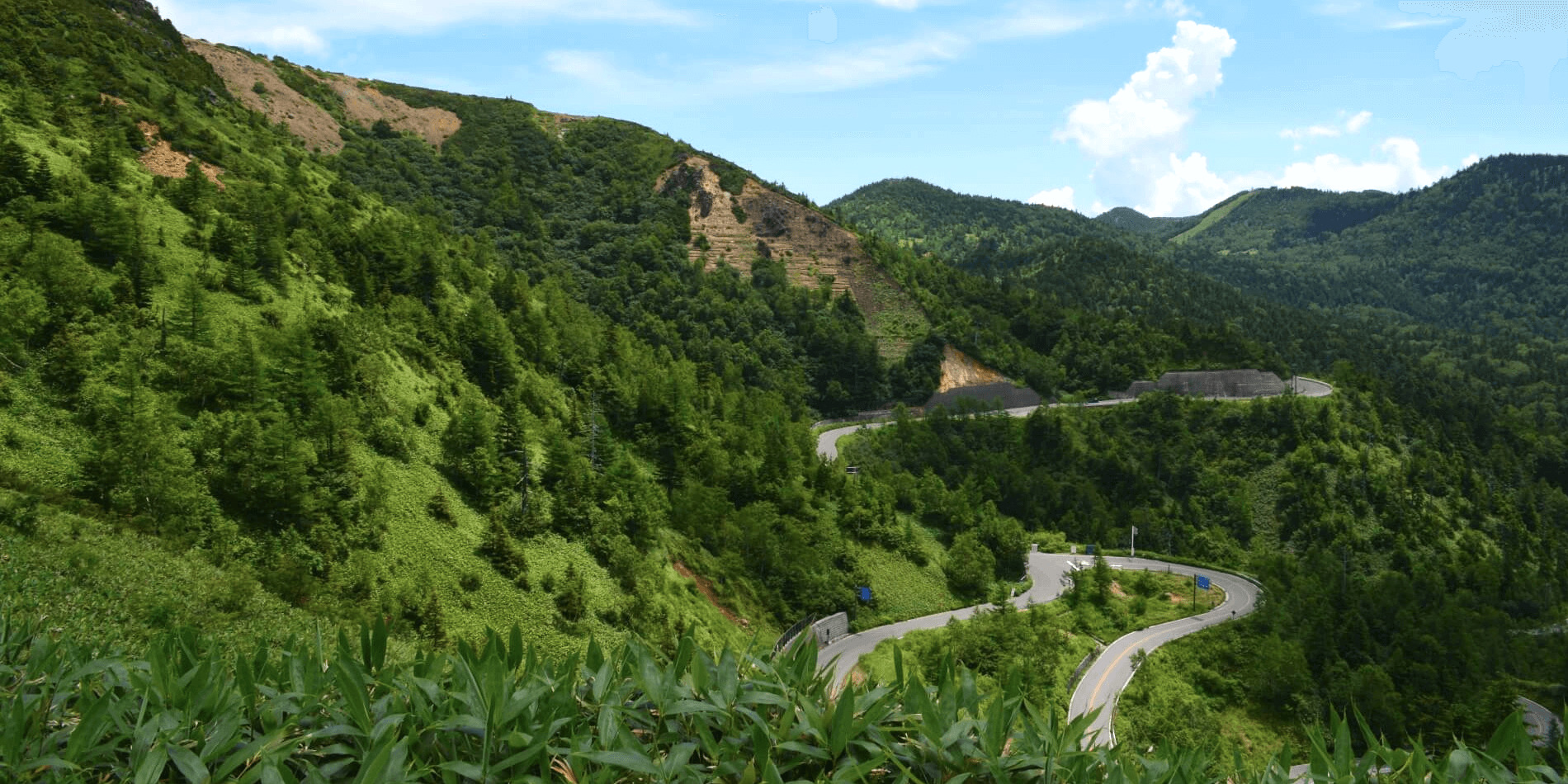
The Shiga Kusastu Kogen Route runs from the monkey park through Shiga Kogen / Joshinetsu Kogen Natinonal Park to Kusatsu Onsen, one of Japan’s most famous hot spring towns. Due to heavy snow in winter, the road is only open between May and mid to late-November but in that time, offers drivers a beautiful drive on well-maintained roads. Driving the route is a great way to move through Joshinetsu Kogen National Park toward Kusatsu Onsen but make sure to check advisories as the road can close from time-to-time as a precaution, when activity is detected or expected at Mt. Shirane. Mt. Shirane is an active volcano and your personal safety should be your first priority. The Japan Meteorological Agency provides real-time advice and warnings for the entire country. Prior to visiting Shirane, we recommend checking the following website.
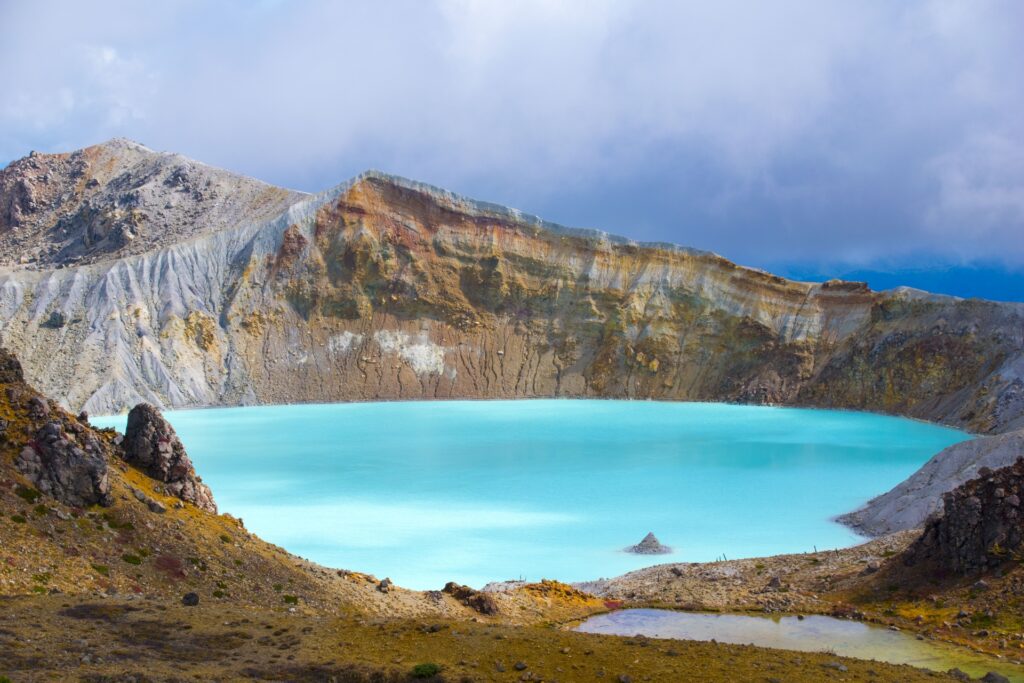
Driving the route to Kusatsu Onsen connects you to one of Japan's most famous hot spring towns. Fed by the volcanic waters of Shirane, the town is instantly recognisable for many Japanese due to its iconic 'yubatake' (hot water field), that sits in the centre of the town and flows into the baths of the surrounding guesthouses. For more information of what's on offer in Kusatsu and the surrounding area, see our '25 Things To Do Around Kusatsu Onsen & Where To Stay' page.
15 / HISTORIC OBUSE & HOKUSAI / all year round
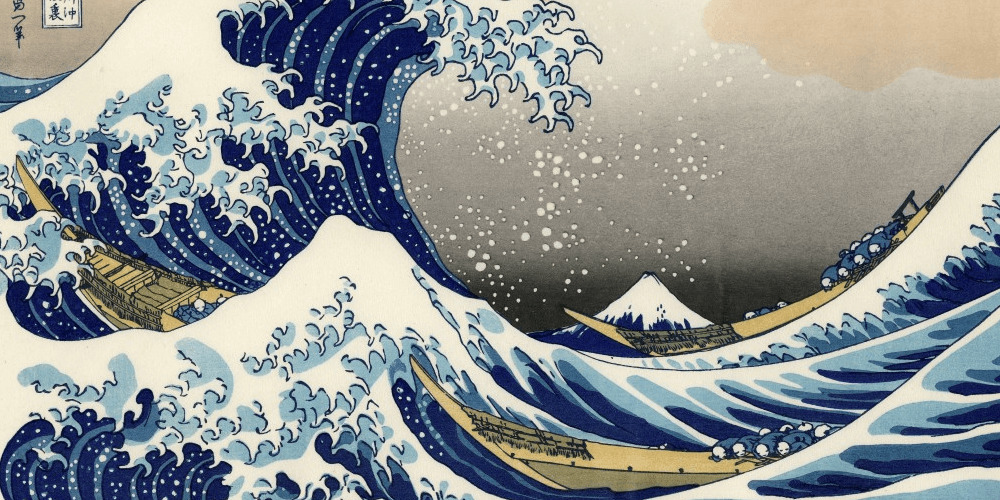
Only a short train-ride from Yudanka Station – the nearest station to the monkey park - Obuse is a small but historic town known for its chestnut confectionary shops, sake and miso breweries and – perhaps most famously as home of the Obuse Hokusai Museum. Having spent some of his final years painting in Obuse, the museum is dedicated to the life and work of Japan’s most famous artist, Katsushika Hokusai, and offers an engaging and informative experience. Combined with a visit to the nearby Takai Kozan Memorial Museum – at which you can enter and take in the atmosphere of Hokusai’s actual studio – along with Ganshoin Temple – the ceiling of which is adorned with Hokusai’s last great masterpiece – a visit to Obuse offers a unique glimpse into the life and work of Japan’s greatest artist. For more information, see our '15 Things To Do Around Obuse & Where To Stay' page.
16 / ZENKO-JI TEMPLE – NAGANO’S SPIRITUAL HEART / all year round
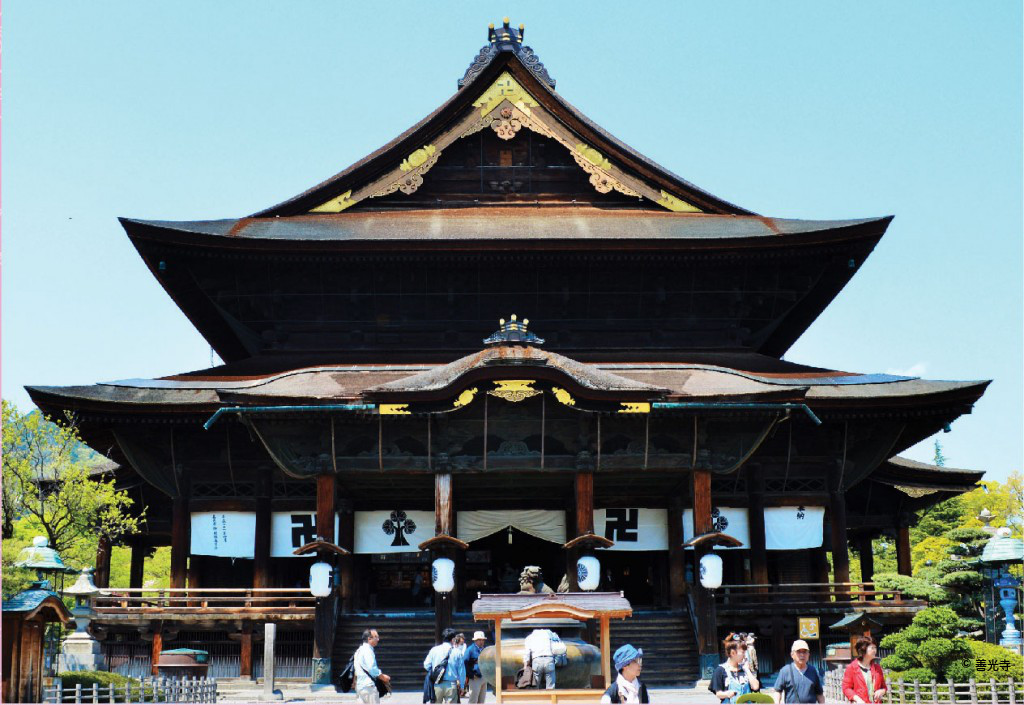
Located in Nagano City and founded in 642, Zenko-ji is one of the oldest and most important Buddhist temples in Japan. Less than 20-minutes walk from Nagano Station, follow the city’s historic thoroughfare – the ‘Omotesando’ or ‘Pilgrim’s Way’ all the way to the temple. Arriving at Zenko-ji, visitors discover one of the most welcoming temples in Japan. Housing the oldest known Buddhist statue in Japan, the main temple is a registered National Treasure and the spiritual heart of the region. A morning ceremony takes place every day of the year, with visitors of all faiths and backgrounds welcome, with the temple also hosting several major festivals each year.
Why not combine two of the Nagano areas best attractions, Zenkoji and the Snow Monkeys, into one easy day tour? Saving you the trouble of having to plan around public transport, our tour of these two must-see spots is even doable as a day trip from Tokyo (for guests using the Shinkansen to reach the pick up/drop off point of Nagano Station).
17 / TOGKAUSHI: FOREST SHRINES, NINJA & MORE / all year round
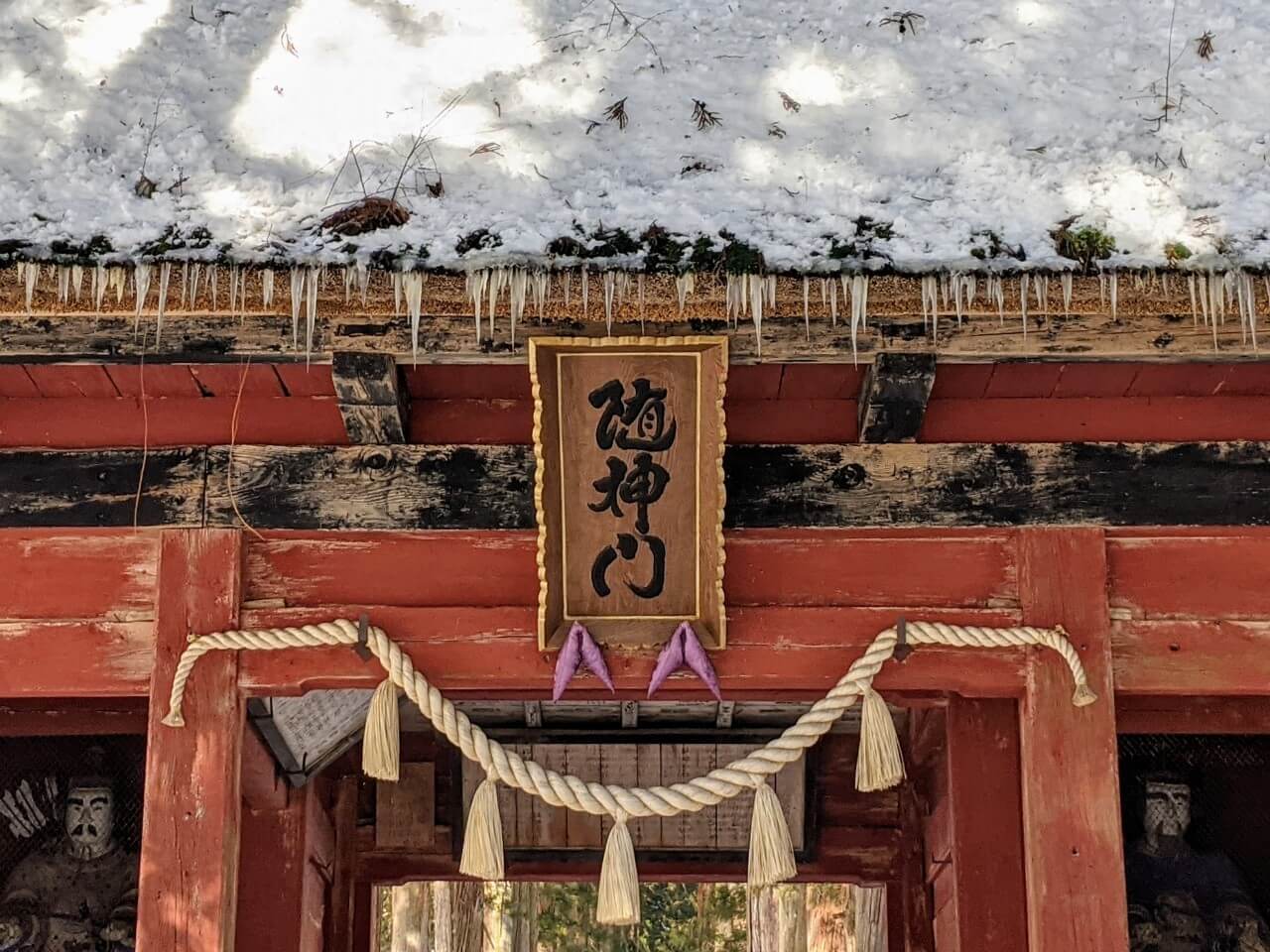
Japan’s native religion of Shintoism has its roots in nature worship and a belief that notable natural features are imbued with divinity. This belief is on grand display in Togakushi, where the five shrines making up the Shinto complex are spread through the forest with trails leading from one to the next. Of the five, the ‘Okusha’ (Upper Shrine) is the best known due to the avenue of giant cedars leading to it. Many of the huge trees are between 400 to 800 years old and considered inhabited by ‘kami’ or ‘the divine’, meaning that they have as much importance as the shrine itself.
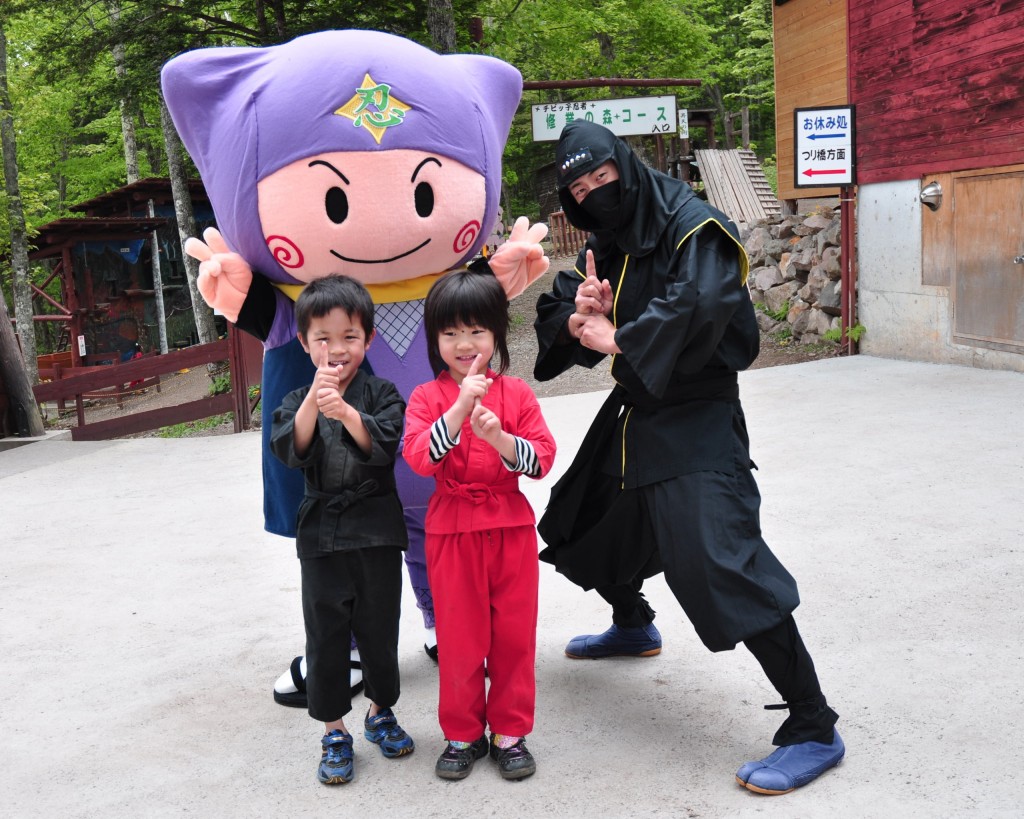
Only 45-minutes from Nagano Station using local bus services, Togakushi also has had a strong association with Japan’s fabled ninjas. Established in the 12th century, the Togakure school of ninja was founded in the mountains of Togakushi and though practicing ninja maybe few and far between these days – believe it or not there are still some – the mountains and forests of Togakushi now play host to a ninja museum and kids village. Located directly across from the cedar avenue leading to the Okusha, the Togakure Ninpo Museum showcases the local Togakure school while the ‘Chibiko Ninja Mura’ (Kids Ninja Village) is located within 15 minutes walk of the Chuusha (Middle Shrine) and designed for children with obstacle courses and everything they need for ninja training. For further details, see our ’15 Things To Do In Togakushi & Where To Stay’ page.
1-Day Togakushi Legends Tour: Hands-on Soba Noodles, Ninja Village, and Hidden Shrines
- Spots:
- Pick-up:
- Drop-off:
18 / MYOKO-TOGAKUSHI RENZAN NATIONAL PARK / all year round
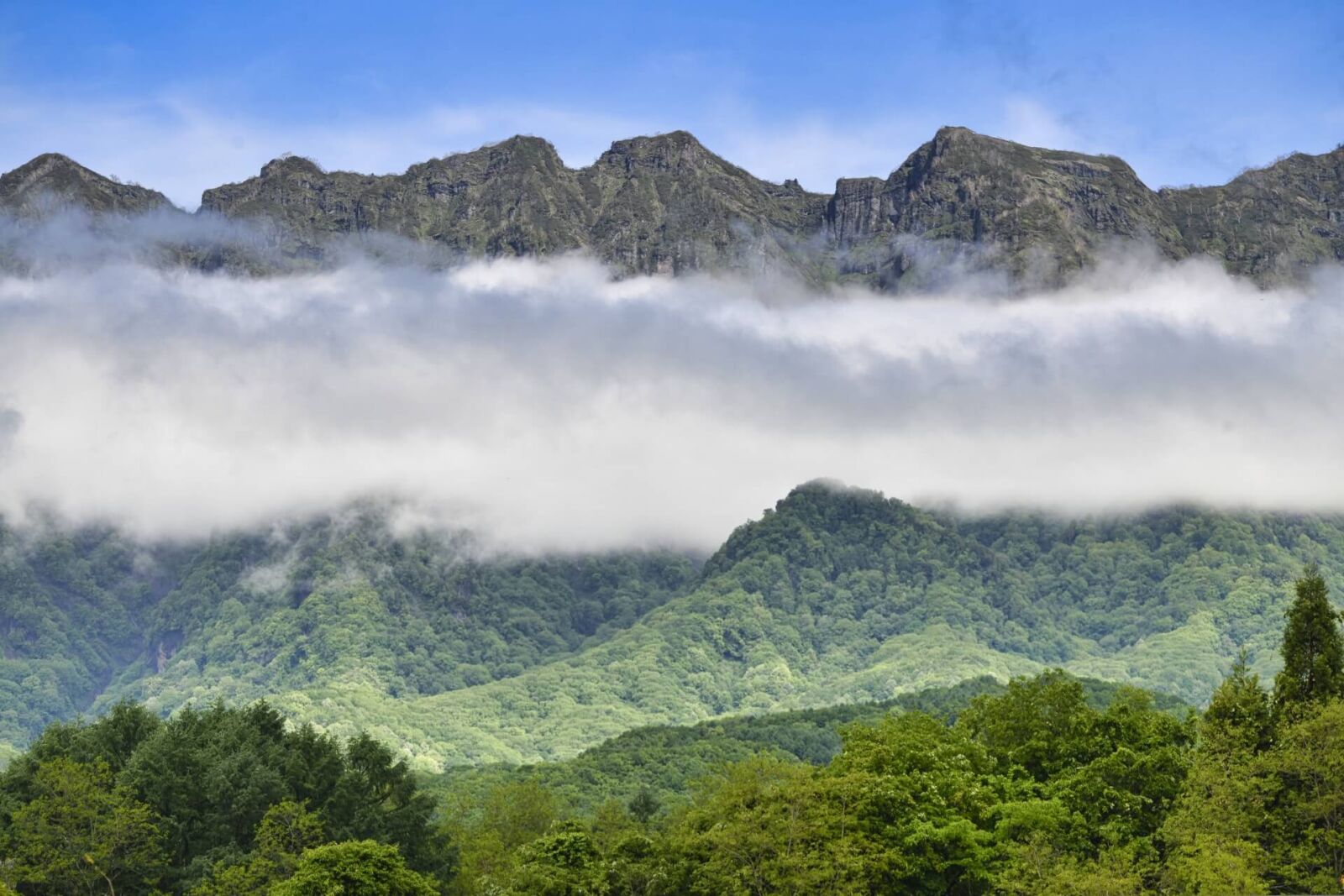
Located around 1200 metres above sea level, Togkaushi is nestled within the larger Myoko-Togakushi Renzan National Park. The park is densely-packed mountainous area of forests, waterways, ski resorts and important mix natural and cultural sites. Among its multiple peaks Mount Hiuchi is the tallest at 2,462 metres above sea level while the park takes its names from the peaks of Mount Myoko and Mount Togakushi. Extending into Niigata and the ski resorts surrounding Mount Myoko, the national park is a destination to itself that can be enjoyed throughout the year.
19 / MATSUSHIRO: NAGANO’S SAMURAI TOWN / all year round
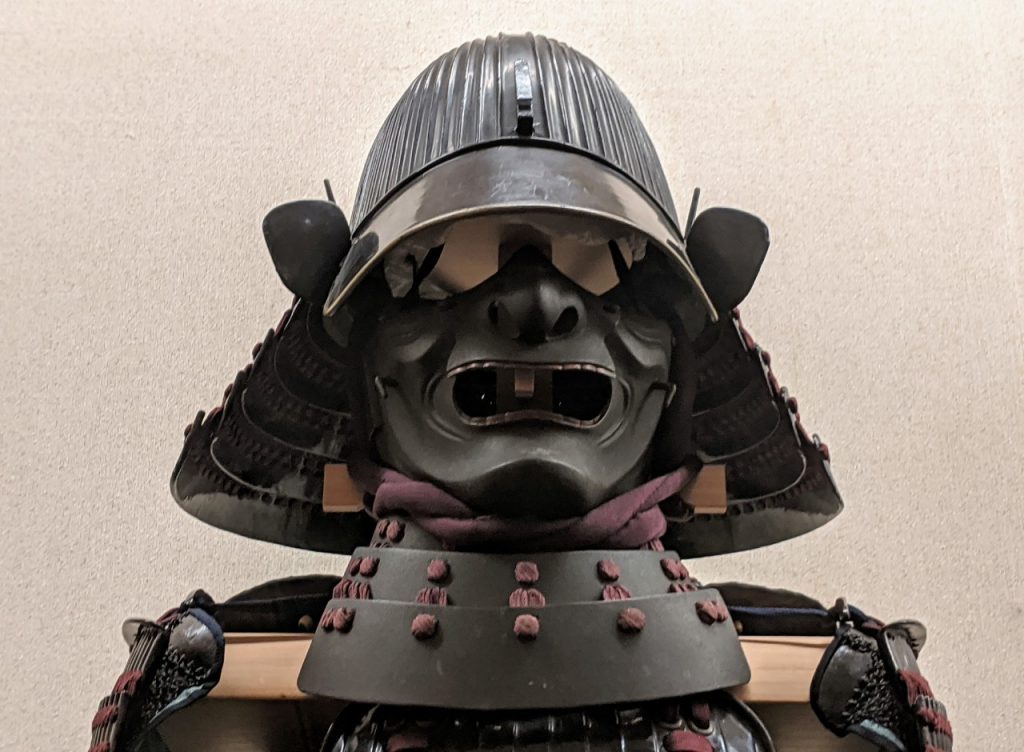
Located 12km to the south of central Nagano City, Matsushiro is a small enclave known for its samurai heritage and as the former stronghold of the Sanada clan. Originally from Ueda, the Sanada clan relocated to Matsushiro during the 17th century. Today, the town’s samurai heritage lives on many excellent Edo Period attractions including Matsushiro Castle Park, the former Sanada Residence and Bunbu Military Academy, other samurai residences, temples, shrines and museums. For further details, see our ‘15 Things To Do In Matsushiro & Where To Stay’ page.
New Tour
1-Day Samurai Food & Life Tour: Oyaki, Samurai Residences, and Katana Practice
- Spots:
- Pick-up:
- Drop-off:
Want to get hands on and learn more about the Samurai way of life? Why not try Katana practice? With our tour above, you will not only learn about how the Samurai lived and trained, but also about what they ate with a visit to an Oyaki (a type of bun with various fillings) factory. Leave the hard parts of travel up to your guide and spend a day being a Samurai!
20 / STAY & ENJOY NAGANO CITY / all year round
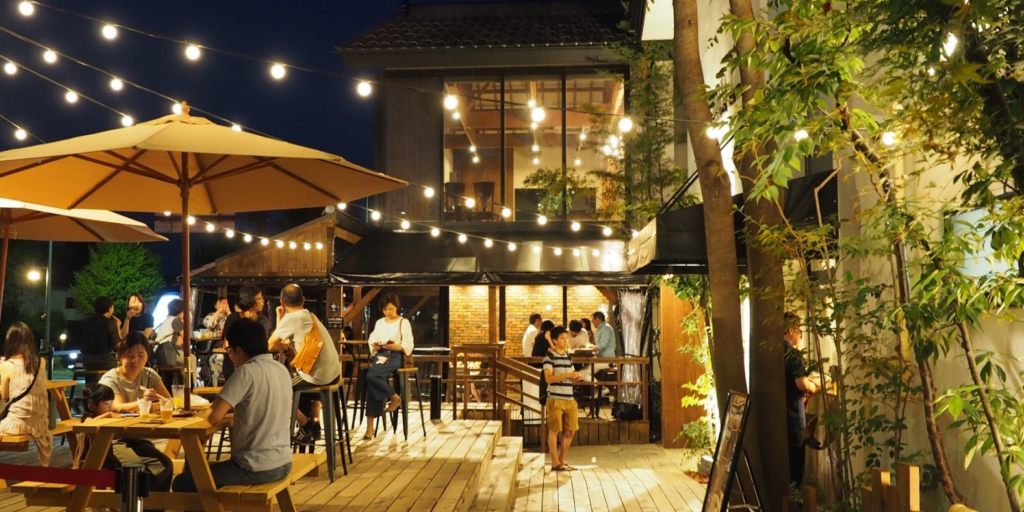
Many if not most international visitors headed to the monkey park will do so via Nagano Station. Located in the centre of Nagano City, this is an ideal base from where to explore the region using trains and buses to access destinations including the monkeys, Shiga Kogen, Togakushi, Matsushiro, Matsumoto and more. The area in and around the station has multiple large, Western-style hotels with prices typically reasonable. Located between Nagano Station and Zenko-ji Temple, Hotel Kokusai 21 is the city’s most established international hotel. Known for its blend of modern amenities and attentive Japanese service, Kokusai 21 offers guests spacious Western-style rooms with private bathrooms, multiple in-house restaurants including daily breakfast service and English-speaking 24-hour reception. While the city itself doesn’t have a huge amount to do and see, Nagano is one of Japan’s most pleasant and livable cities with good dining options and above all else, the most convenient hub from where to explore northern Nagano Prefecture. For tips and suggestions of what's on offer, see our '40 Things To Do Around Nagano & Where To Stay' page.
21 / JOIN THE WINTER FESTIVALS OF NAGANO / November to February
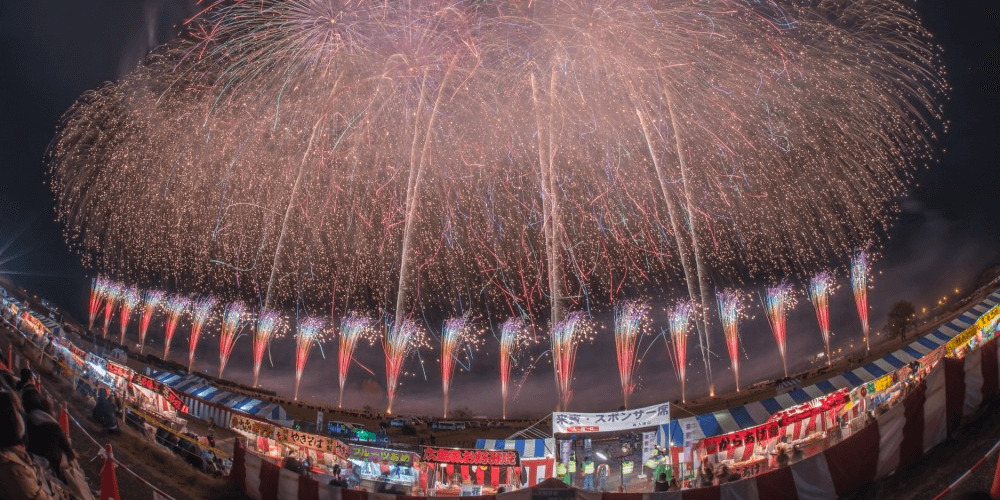
[NOV 23 ONLY] 1-Day Tour: Ebisu-ko Fireworks Festival & Snow Monkeys
- Spots:
- Pick-up:
- Drop-off:
Nagano has a busy calendar of festivals throughout the year with winter being the best time to enjoy some of its most popular events. As Nagano’s No.1 tour operator, we offer a series of group tours that combine a visit to the monkeys with some of the most enjoyable festivals in the region. Taking place at the very end of autumn on November 23rd each year, Nagano City hosts the stunning and huge ‘Ebisu-ko Fireworks Festival’. Attracting an estimated crowd of around 400,000 people, more than 15,000 fireworks explode in the crisp late-autumn sky in thanks for a good harvest and heralding the winter to come – and one of our most popular tours of the year.
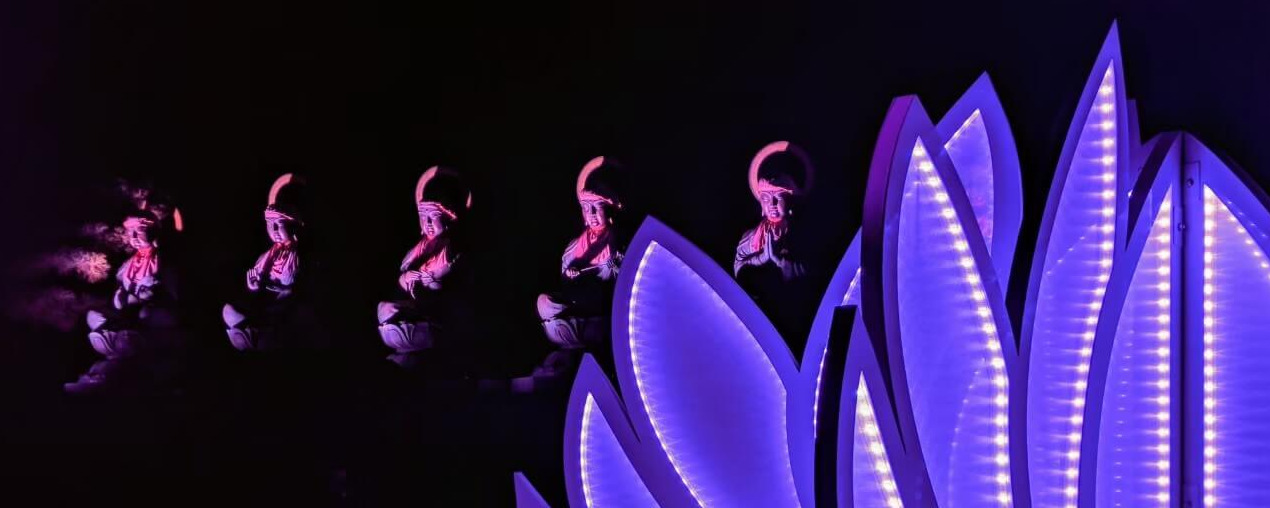
Visitors to Nagano can enjoy some great festivals each winter, starting with the ‘Zenko-ji Omotesando Illumination’ in Nagano City. Held each December, the illumination sees the city’s famous temple come to light and life, awash with colour as it and the ‘Omotesando’ (avenue leading to temple) are lit-up in the cold winter night.
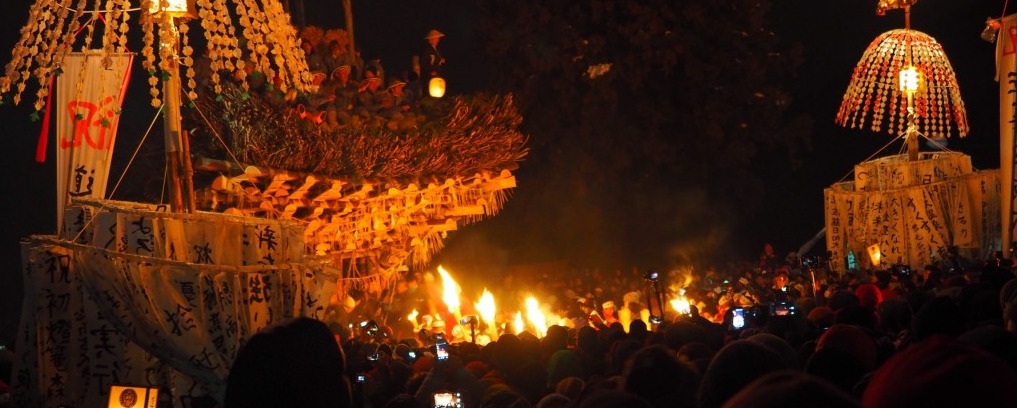
The ‘Nozawa Onsen Dosonjin Matsuri’, or commonly referred to as the ‘Nozawa Fire Festival’, is one of Japan’s three great fire festivals. The festival is held annually on January 15 but preparation starts in October and involves hundreds of villagers, who build a huge wooden shrine which is then – on the night of the festival – simultaneously attacked and defended by men of the village. Always popular and raucous, the festival ends with the shrine being set ablaze – a remarkable sight and unforgettable night!
*In 2024, a reservation at a hotel in Nozawa Onsen was necessary for entry. It is likely that this policy will be continued in 2025, so if you plan to go we highly suggest reserving a hotel well ahead of time to ensure that you are able to attend.
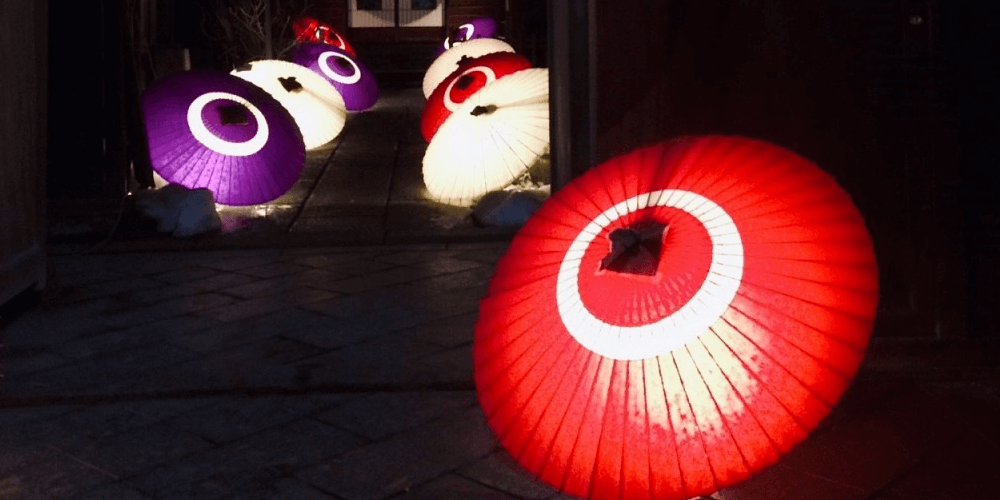
1-Day Tour: Snow Monkeys & Zenkoji Tomyo Lantern Festival
- Spots:
- Pick-up:
- Drop-off:
In the first week of February, the ‘Tomyo Lantern Festival’ again sees Nagano City’s historic temple come to light, as light installations and projects offer thanks to the Buddha – an important act in Buddhism – while also commemorating Nagano’s role as host to the 1998 Winter Olympics.
22 / MATSUMOTO / all year round
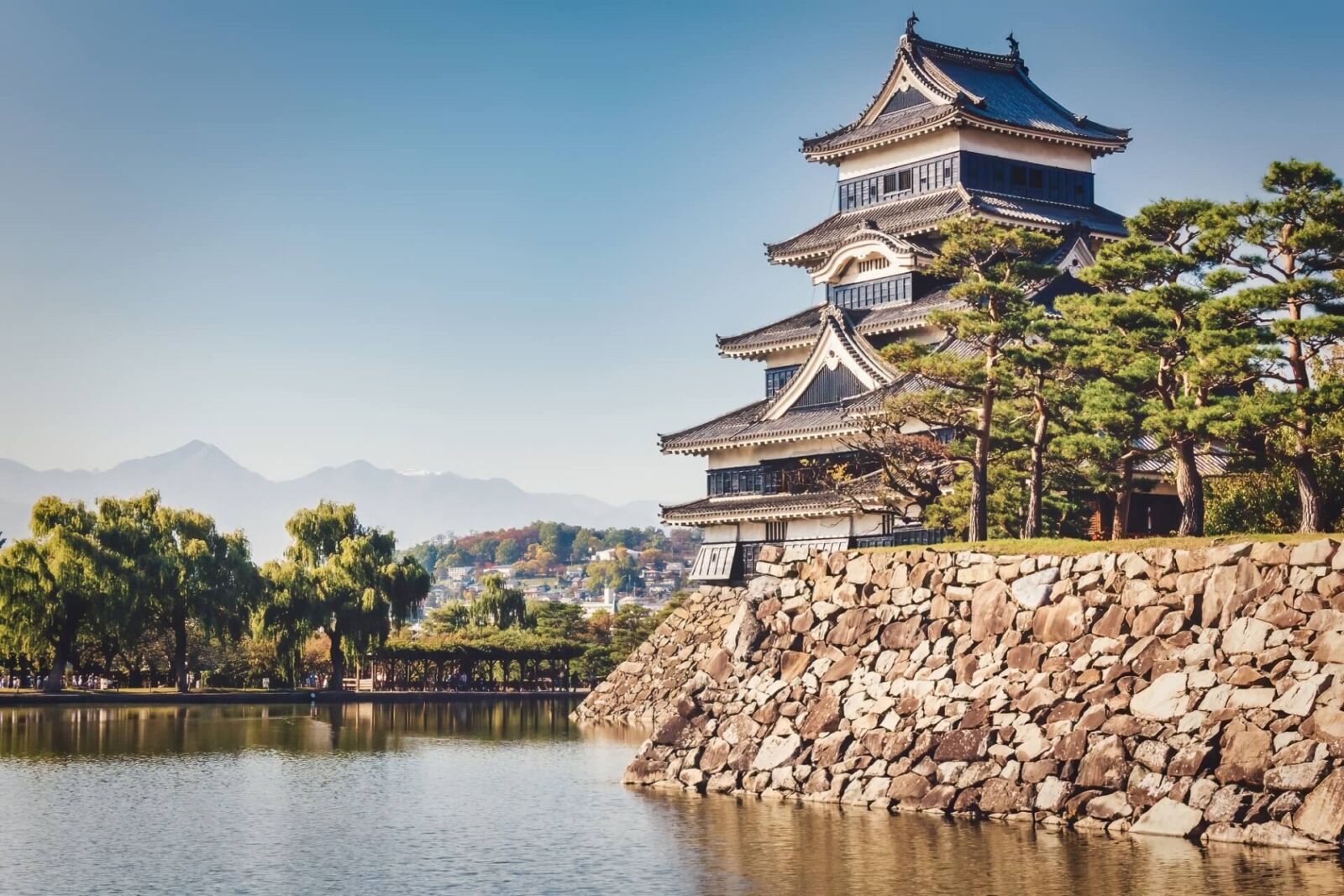
Best Selling
1-Day Tour from Nagano and Matsumoto: Kamikochi & Matsumoto Castle
- Spots:
- Pick-up:
- Drop-off:
Only 50-minutes by train from Nagano Station, Matsumoto is the second largest city in the region and one of real historic importance. Most famously, the city’s 400-year old Matsumoto Castle is a registered National Treasure and one of Japan’s few remaining original castles. The city also boasts the Matsumoto City Museum of Art including the Kusama Yayoi Collection. A native of Matsumoto, Kusama Yayoi is Japan’s best-known contemporary artist and one of the most influential artists in the world today. Once in Matsumoto, you will discover a thriving arts, food and shopping scene and more than enough to keep you entertained for day. For suggestions of just what's on offer, see our '25 Things To Do Around Matsumoto & Where To Stay' page.
23 / KAMIKOCHI / April to November
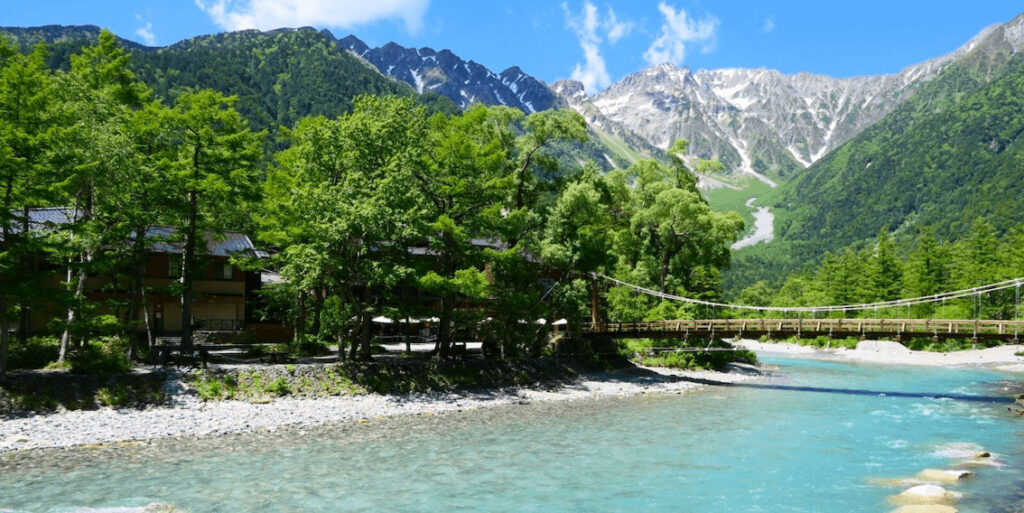
[START FROM NAGANO/MATSUMOTO] Private Wasabi-Picking Experience & Kamikochi
- Spots:
- Pick-up:
- Drop-off:
Located just over an hour from Matsumoto, Kamikochi is a pristine and beautiful alpine valley open to the public from mid-April until mid-November each year. The valley follows the Azusa River while some of Japan’s tallest mountain peaks rise to over 3000 meters above. Considered the jewel of the Chubu Sangaku National Park, visiting Kamikochi is one of Nagano’s most memorable experiences – a truly special place of natural and spiritual importance.
24 / TATEYAMA-KUROBE ALPINE ROUTE / April to November
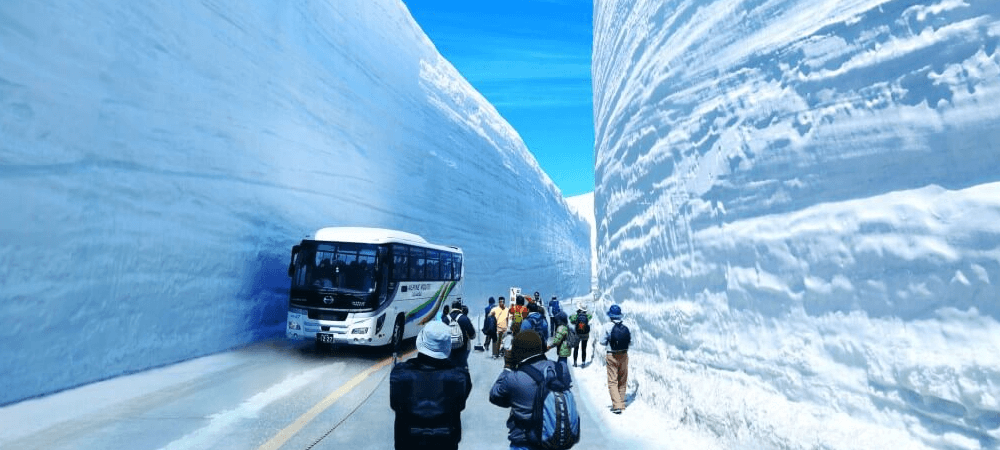
Heralded as one of Japan’s best experiences, traversing the Tateyama-Kurobe Alpine Route takes approximately 6 hours including time to stop and enjoy all of its stunning sights. Open from mid-April to mid-November, the Alpine Route is most famous for its immense snow walls which, at their peak, ascend 20 meters above the road below.
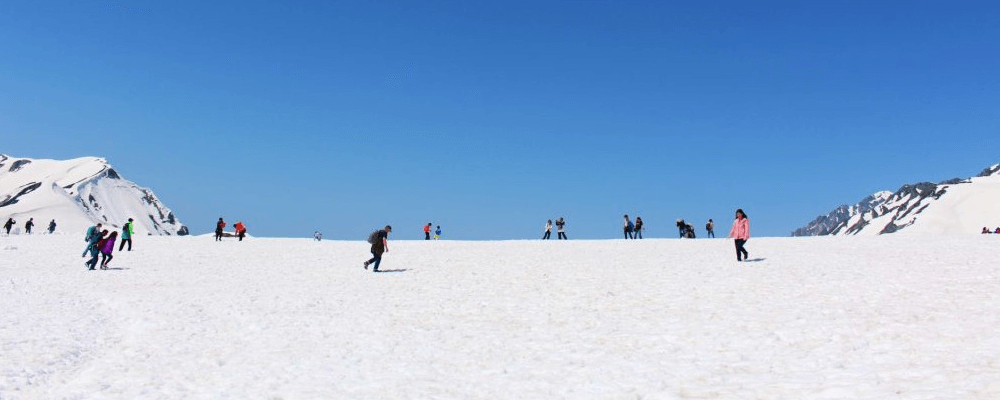
Popular
[Spring Only] 1-Day Tour from Nagano: Snow Walls of Tateyama-Kurobe Alpine Route
- Spots:
- Pick-up:
- Drop-off:
The snow walls are at their best from the opening day in April until mid-June, after which outstanding hiking is available through summer and autumn, climaxing with stunning autumn colours in October until the route closes again in November. Visitors can start from the Nagano-side via Ogizawa Station (or the Toyama-side via Tateyama Station) and choose to finish on the other side or return to their point of origin. A series of mountain transports including trolley buses, cable cars, a ropeway, and coaches carry visitors to and from Ogizawa Station and Murodo Station – which at 2540 meters is the highest station in Japan. For further suggestions of what to do while there, see our ’25 Things To Do Around the Tateyama-Kurobe Alpine Route & Where To Stay’ page.
25 / ENJOY NAGANO’S MANY SKI RESORTS / December to April
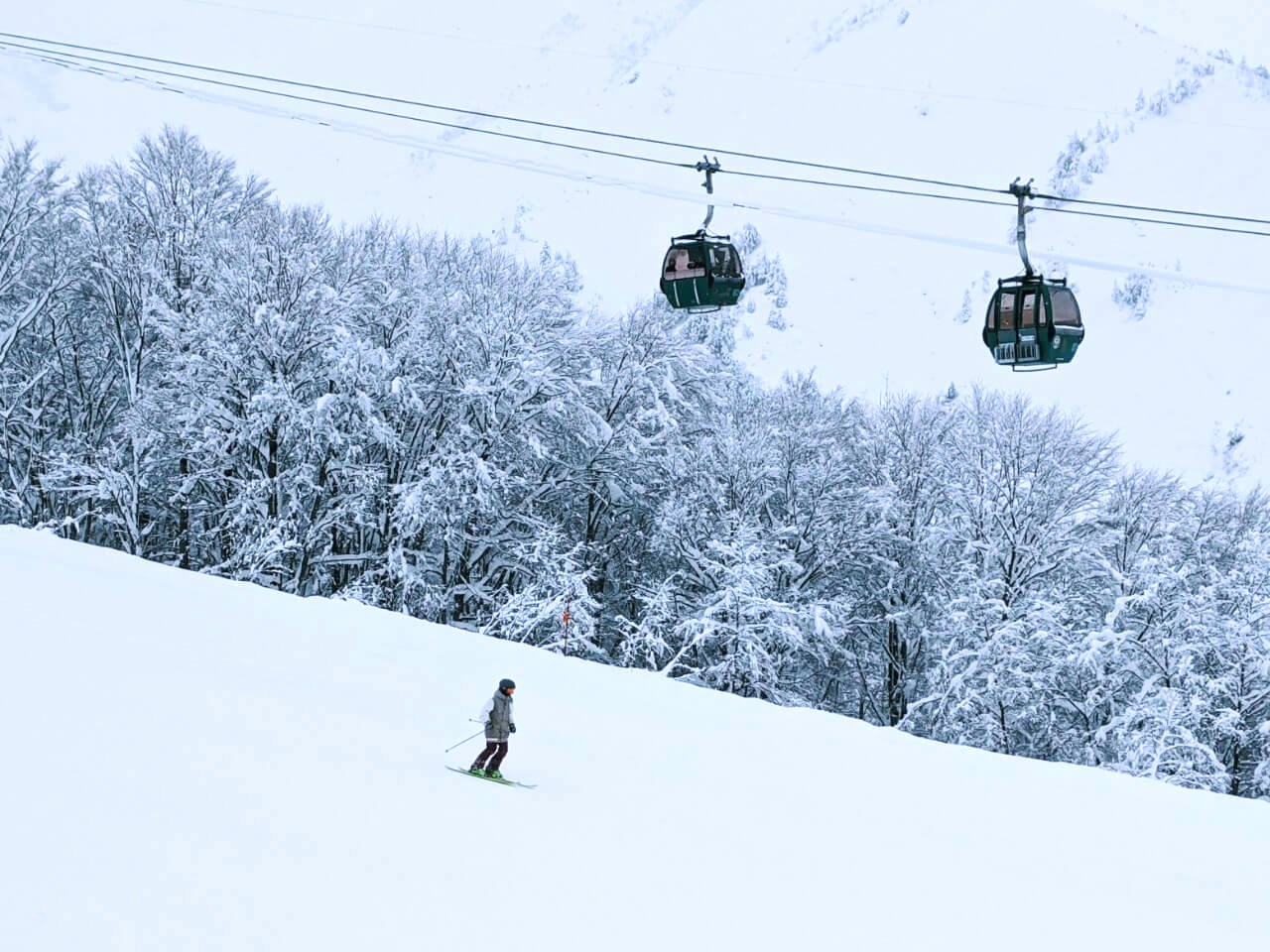

Host of the 1998 Winter Olympics and home to more than eighty ski resorts, Nagano’s credentials speak for themselves. Located between 60 to 90-minutes drive from Nagano Station, the ski resorts making-up the Hakuba Valley are considered some of the best in Japan. In total, ten resorts make the area collectively referred to as ‘Hakuba Valley’, offering skiers and snowboarders a vast amount of terrain and spectacular alpine views. Having hosted several events during the 1998 Winter Olympics, Hakuba Happo One Snow Resort is the best known and largest of the lot. Within walking distance of the Hakuba Happo Bus Terminal, Happo One has a fantastic range of terrain including epic backcountry.
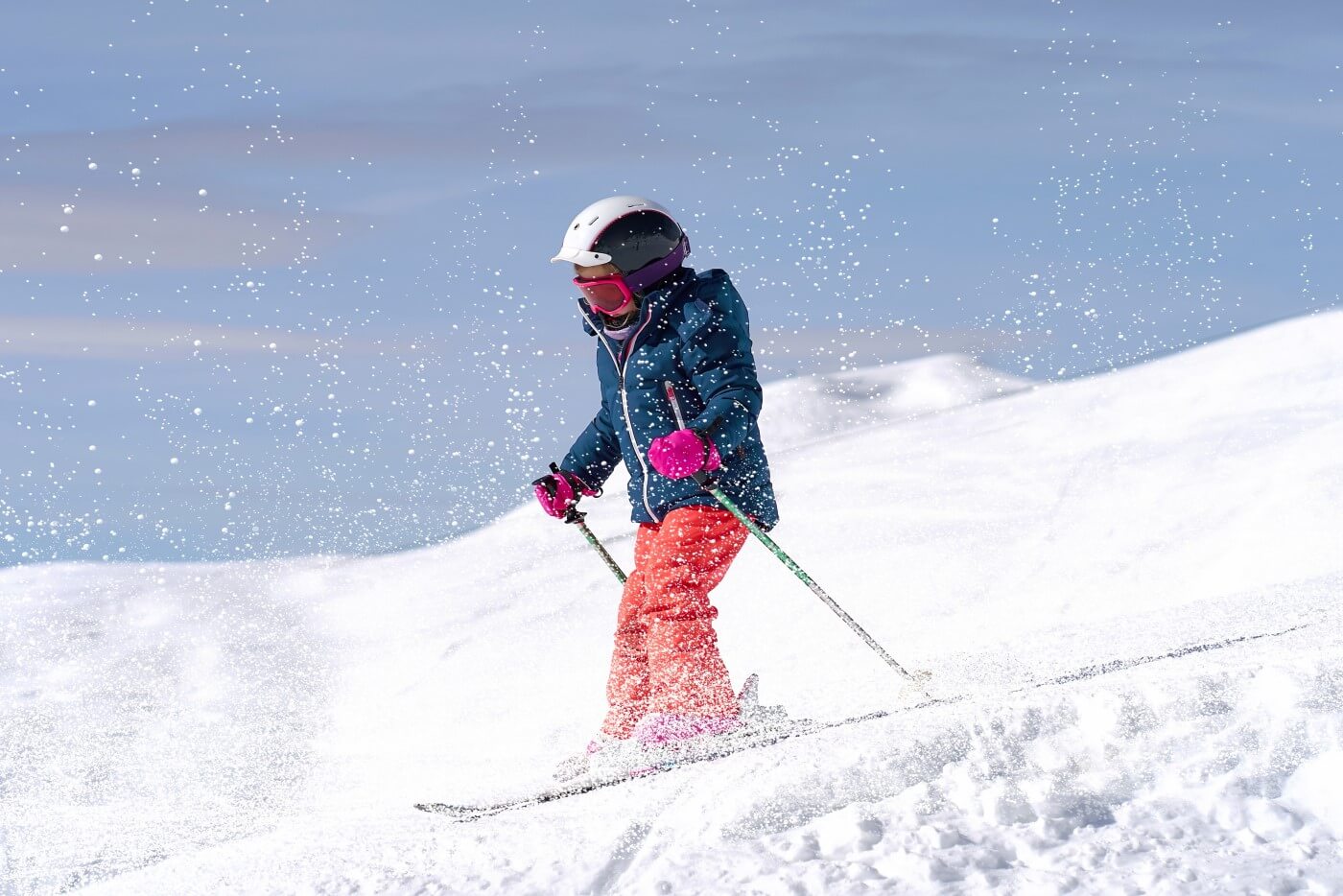
Around 70-minutes drive from Nagano Station or only 20-minutes from Iiyama Station, Nozawa Onsen Snow Resort is one of Nagano’s most popular resorts – offering skiers and boarders around 300 hectares of train between 565 and 1650 metres. Also known for its great powder and setup for snowboarders, Nozawa is a lively resort serviced by a large villagefull of accommodation, restaurants and bars and ‘onsen’ (hot springs), Nozawa’s reputation is as much based on what happens off the mountain as what happens on it. Across the valley from Nozawa Onsen, Madarao Mountain Resort has quickly found popularity due to its heavy snowfall, great powder and super enjoyable tree runs.
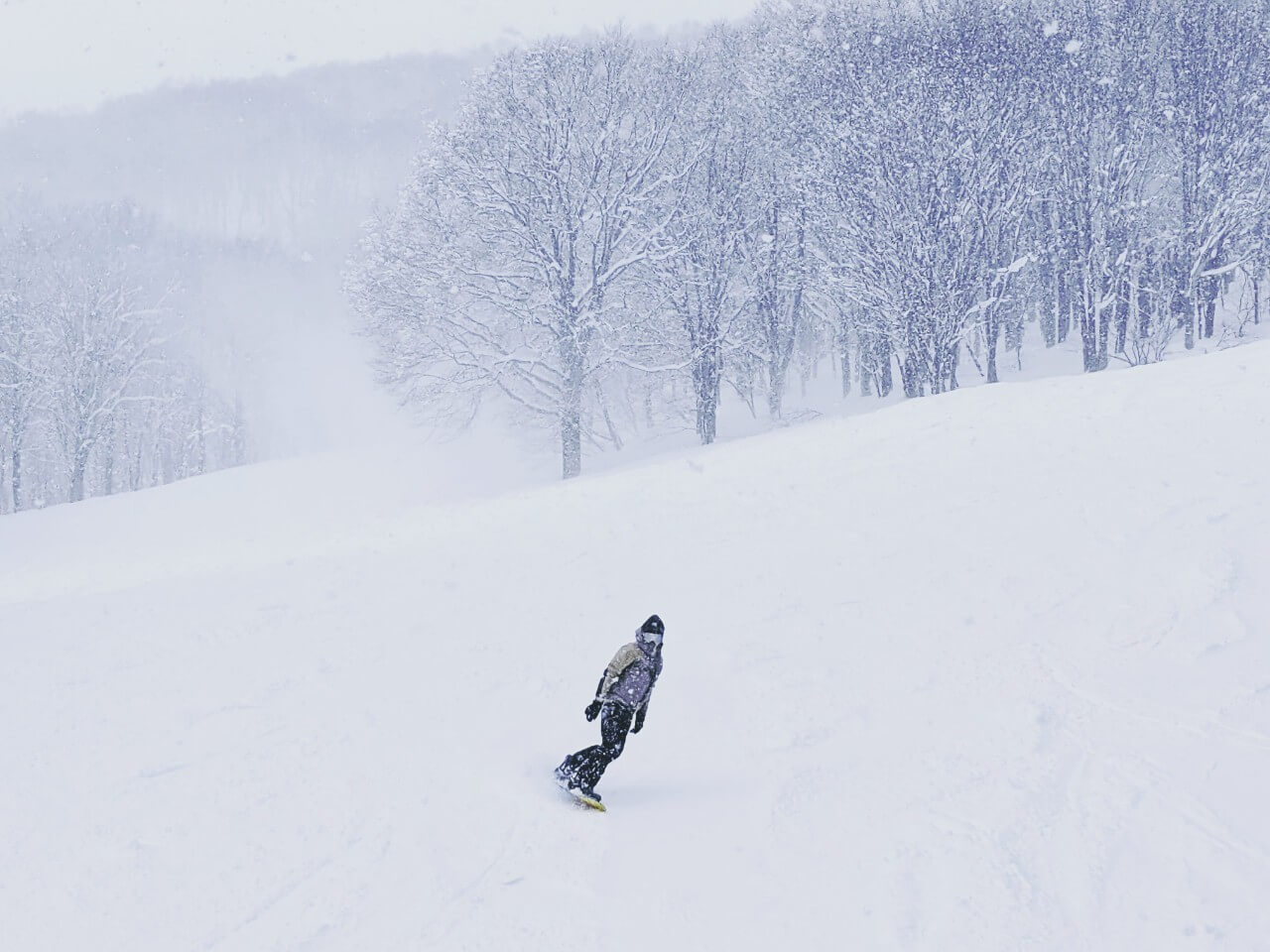

Only 30-minutes drive over the backside of Madarao, the resorts of Myoko Kogen are quickly coming to the attention of international visitors who have discovered its epic powder. Actually located in Niigata rather than Nagano and nearby the coast, Myoko receives a massive amount of snow each year. The resorts making-up the area collectively known as ‘Myoko Kogen’ are less developed than resorts such as Nozawa Onsen and have pretty liberal policies when it comes to backcountry, making Myoko the up-and-coming destination for international powderhounds. For further details, see our 'Japan Ski Resorts' main page.
WHERE TO STAY WHEN VISITING THE PARK
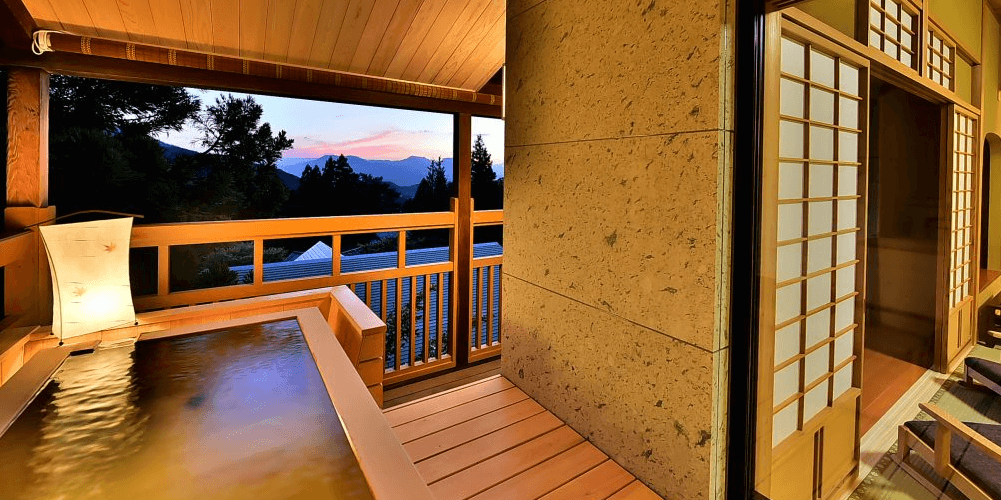
Visitors the monkey park are spoiled for choice when it comes to nearby accommodation. Located in the small hot spring village of Kanbayashi Onsen and a short drive from the larger Shibu Onsen and Yudanaka Onsen, the park can be enjoyed while staying at one of the area’s many guesthouses, many of which have their own hot springs, or further afield in Shiga Kogen or Nagano City. Our ‘Where To Stay Around The Jigokudani Monkey Park’ page lists the best areas to stay, our recommendations and accommodation listings.
SNOW MONKEY PARK GENERAL INFORMATION
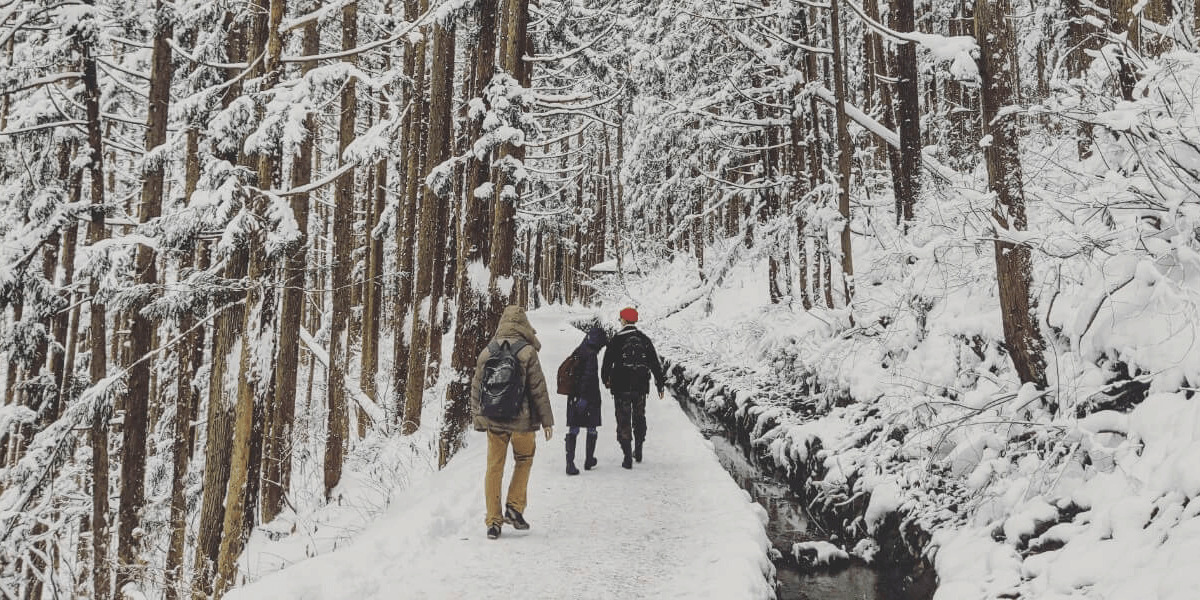
Open every day of the year, the Jigokudani Monkey Park is one of Nagano’s most popular destinations. Our ‘Snow Monkey Park Information’ page has everything you need to know including opening times, prices, the park rules, FAQs, how to get there and more. We hope you enjoy your visit with our favourite furry friends.
TOURS AND CHARTERS TO THE MONKEY PARK

As Nagano's No.1 tour operator, we are proud to offer multiple tours that combine a visit to the Snow Monkey Park with other fun local activities. No matter the season, we can help you make the most of your time in Nagano. Whether with your family or friends, or on your own, we are sure to have something that suits your needs!
Our most popular offering is our "1-Day Tour: Snow Monkey Park, Zenkoji Temple and Sake in Nagano". Guests on this delightful excursion will first be treated to Sake Tasting and a guided tour of the historic Zenkoji Temple in Nagano, including lunch at a nearby restaurant.
With the first half of the tour complete, you will then depart for the Monkey Park on our private tour vehicle. Once you have arrived your guide will lead the way up to the place the Monkeys call home, before you once again board the bus and return to your starting destination.
For those guests coming in the Winter, we also offer the "1-Day Tour: Snow Monkeys & Snow Fun in Shiga Kogen", combining exciting snow activities such as sledding and riding snow scoots with a visit to the Monkey Park. Lunch is also included, making for the perfect day trip for anyone looking to experience what winter in Nagano is all about!
Another unforgettable tour is our "1-Day Tour: Snow Monkeys & Cherry Blossoms in Nagano". Including two of Japan's most amazing natural spectacles, the blooming of the Cherry Blossoms and the hot-spring loving monkeys of Jigokudani, this offering is the easiest way to enjoy a relaxed spring day in Nagano.
[START FROM NAGANO CITY] Private Snow Monkey Tour
- Spots:
- Pick-up:
- Drop-off:
For those who want a more customized experience, we also offer private tours of the Snow Monkey Park and nearby attractions such as Zenkoji Temple. For more information, please click the link above or send us an inquiry describing your ideal itinerary.
CHARTER A VEHICLE TO THE SNOW MONKEY PARK!
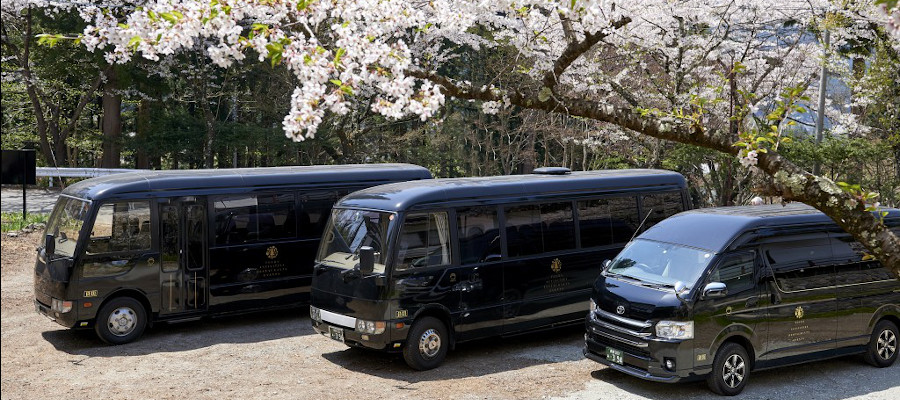
For those interested in private charter services, we would be pleased to provide a vehicle and propose an itinerary to suite your needs! Please see our charter page and send us your trip details so we can can start planning your journey together.














